In the Kyrgyz mountains: Horses and yurts as far as the eyes can see (51)
We are writing these lines while we’re traveling on a high-speed train to the cities of the Ancient Silk Road in Uzbekistan and let our thoughts wander back to the vast summer pastures in the mountains of Kyrgyzstan. One of our absolute highlights this summer was the visit of the mountain lake Song-Kul. The picturesque lake can only be reached by some bad gravel roads and you have to take some provisions and water for your stay. After two exhausting days on gravel roads, we reached the Kalmak-Ashuu Pass in August at 3447 meters and were admittedly a bit proud of ourselves as this was the highest pass of the trip so far and despite the partly steep sections on the way, it wasn’t as exhausting as feared. And as soon as we caught our breath again, we could spot the famous mountain lake Song-Kul in the distance, what a sight.
Idyllic Song-Kul: A beautiful pasture dotted with yurts at 3000 meters
After Issyk-Kul, Song-Kul is the 2nd largest mountain lake in Kyrgyzstan and is located in the middle of the Inner Tian-Shan Mountains at an altitude of 3000 meters. The lake is accessible via various passes in summer and already the journey leads through beautiful valleys and green hills with meadows, but the arrival at the lake itself is simply overwhelming. We cycle along yurts, summer pastures and large herds of animals, everywhere we see cows, sheep and especially horses. Herds of hundreds grazing horses as far as the eyes can see. Dario grins at me and says "a truly shitty place". While we were climbing up the pass, trucks loaded with animals passed us on the way to the summer pastures. This is done here by pick-up and not as in Tusheti in Georgia by a strenuous walk.
But don’t be fooled by the serenity of Song-Kul, modern times arrived here as well and yurt camps advertise Wi-Fi and some yurt stays can even be reserved via booking.com. But this doesn’t hide the fact that the people here still live in harmony with nature during the summer months from June to September. The life here is simple and seems peaceful, but of course, there’s always something to do for the nomads living here. You get up early in the morning and look after the animals, bake fresh bread during the day and prepare dairy products such as butter, yogurt and Kumys (fermented mare's milk), wash your clothes in one of the streams and check-up on the animals again in the evening. But we are blown away that such a place still exists and as soon as you arrive at the Song-Kul, you can feel this special tranquility surrounding you.
It's a place to linger a little longer and we can imagine how great it must be for the kids to spend the summer up here and just running around and riding horses all day. Of course, some diversion is also offered by passing cyclists, who with a little luck, bring some sweets with them. The cheeky children run from all corners towards us and ask for "Yam Yam", which we interpret once with sweets and unpack our supply. For this case we have bought extra a big portion of sweets in the small town Kochkor and the children seem to almost expect that we have sweets for them. And it's no surprise that the children up here learn to ride when they can barely walk and they feel sorry for us when they hear that despite our advanced age, neither of us has ever sat on a horse for any length of time.
We were lucky with the weather and caught a few beautiful days with mild temperatures, as on 200 days a year there is snow here and the Song-Kul is covered with a sheet of ice. But now in summer, it has pleasant 20° C air temperature and also the lake itself invites brave swimmers to a short bath with 10° C. And after crossing the pass, we also quickly jump into the crystal-clear lake and marvel at the mighty peaks surrounding us, the many yurts and horses and can hardly believe our luck. When we then pitch our tent directly on the lakeshore and experience the first gorgeous sunset at the lake and at night the stars are close enough to touch, it seems pretty idyllic. If cycle touring were always like this, many more would probably choose this way of traveling. We are once again without words to describe the natural beauty of Kyrgyzstan. No matter where we’ve been so far, it was just spectacular, but the Song-Kul is its own league and no wonder it’s called the “Jewel of the Kyrgyz Crown”.
We cycle along unpaved, bumpy tracks and keep passing herds of animals peacefully grazing on the lakeshore. Yurts are dotting the shoreside meadows every few kilometers and the whole scenery with the lake in the background and the blue sky is just sublime and we decide to spend three days at the lake. But not always in the tent, as the whole scenery just calls for another yurt stay. There are numerous bigger tourist yurt camps with a large dining yurt and even a shower, but there is also the option to simply ask a family for a place to sleep and get a more authentic and rustic experience. However, we’re a bit lazy and the thought of some sort of shower is quite tempting and so we go to a medium sized tourist camp that is within walking distance of the lake and to our surprise even has a shower with hot water. We wouldn’t have expected this, but we accept it gratefully.
As usual in Kyrgyzstan during high season, there are quite a few international tourists in the yurt camp and they all share the same enthusiasm for the country and the unique atmosphere at Song-Kul. There are also some professional riders who are on a multi-day horseback trek along the lake. We feel a little guilty admitting in the land of the mighty horsemen that we’ve got no idea about horses and riding them. Therefore, we make only a very short horseback ride from the yurt camp into a valley and it’s very pleasant, but we still prefer our bicycle. Although looking back, it would’ve been nice to go on a longer ride.
There isn’t that much to do at Song-Kul except wandering around, observing the locals living side-by-side their flocks, hiking along the lake, reading a book on a wooden swing or just marveling at the nature. The good life. And after a heavy dinner in the yurt camp and plenty of tea, you snuggle up in thousands of thick blankets and blissfully fall asleep in the yurt. It turns out to be a highlight of our trip.
Kok Boru: Horsing around a headless goat
Ancient customs and traditions are still practiced at Song-Kul, including the popular Kok-Boru (dead-goat polo). Two teams of four players on horseback compete for the body of a goat or sheep. Sounds archaic? That’s because it is.
The game has been around for 1,000 years and the ancestors of today's nomads played it for centuries in the mountains. When Kyrgyzstan was part of the Soviet Union, it was banned, but still continued to be played secretly in the villages. During the World Nomad Games you can watch this game with a big audience, but normally it’s played in the winter. So, if you want to experience the Kok-Boru in summer at Song-Kul, you have to be with a group and then a short performance can be organized or you just have to be lucky and join some people like us. Coincidentally, a performance is taking place at a neighboring yurt camp and we’re allowed to attend.
We arrive just in time for the slaughter of the goat. The animal is first blessed and then beheaded. The whole process goes pretty fast and blood splatters everywhere on the grass, while the dogs greedily run in circles. The carcass is then prepared by sewing the holes to prevent the internal organs from spreading all over the field.
We could have done without this experience. But we travel not to judge, but to observe and learn, which doesn’t mean that we approve of everything we see. It’s sometimes difficult to simply accept foreign customs and to completely detach from our European mindset. But we try to keep an open mind and respect different traditions. But using a dead animal for a game, we can’t help but wondering why they don’t just use a ball. On the other hand, the winning team gets the goat carcass as a price and then they prepare a meal for their families and we can feel the respect the Kyrgyz have for their animals. By the way, the head of the goat is given to the dogs, which accompany the game with loud barking.
Ready, steady, goat! The game ball aka the goat carcass is now ready and thus the fast-paced spectacle can begin. With a focused gaze, the riders are trying to bent down and scoop it up. It sounds easier than it is, as the teams push and shove each other quite roughly. An opponent gets in the way with his horse and blocks the goat carcass. Now maneuvering is the order of the day and certain horses are specially trained to defend the goat and do it quite consistently. But also the attackers proceed quite brutally with their horses against the opponents. At some point, a player manages to pick up the goat carcass from the ground, without dismounting, of course. Then the battling and blocking while trying to grab the goat carcass really starts and as a spectator you only see dust and horses and don’t realize what’s going on. But suddenly momentum returns and one of the riders can charge off with the goat and tries to get it into the opponent's goal, a kind of concrete ring on the grass or in our case a slight depression in the grass. We learn that professional horses are trained to run automatically as soon as they feel the extra weight of the goat carcass.
Then it’s time for a break and you can see the exhaustion written all over the players' faces. But they are also very proud to be able to practice their national sport and enjoy it. Of course, the whole thing is purely a male thing and when I ask about female players, I only get an uncomprehending look as an answer and the suggestion that I could hold up the goat. Dario dares and lifts the carcass and it’s heavier than anticipated. It’s pretty tough to lift a 30 kg carcass with one arm off the ground whilst remaining seated on a moving horse and it requires lots of strength and coordination from the players.
Just as Indians adore their cricketers, Australians their rugby players, Italians their soccer players, the Kyrgyz adore...well, what? Their Kok Boru players and their horses. Especially Achilles, the strongest horse in Kyrgyzstan. The players tell us about him in awe and the little boy next to me proudly announces that he would like to play Kok Boru when he’s old enough.
After three rounds, each lasting about 20 minutes, one team has won and they all come together to relax and talk. The winning team is awarded the carcass of the goat and it’s a big honor for them to eat the meat after the game. The meat should taste especially tender now, after all that pushing and pulling. And we’re grateful for this insight into this archaic tradition and feel like we just watched on of the most obscure sports played around the world.
About the happiness of cycling and the joy of suffering
After three sunny days the weather changes and it’s time for us to set off. We want to ride over the Kizart Pass and via Kazarman into the southwest of Kyrgyzstan. But finding the pass turns out to be not so easy and the app Komoot leads us once again to a path that isn’t a path. We ask at a yurt and are pointed to the right way. As soon as we reach the top of the pass, the sky darkens and it starts raining. We see no one around and only pass a few houses, it feels very remote. The first place we see after six days has only the usual meager selection in the supermarkets: Three quarters of the assortment consists of dry cookies and sweets, fresh products are missing.
The first place with some infrastructure but without charm is Chaek. From here we decide to turn south and unexpectedly end up on a newly built highway, which is supposed to connect the capital Bishkek with Osh in the near future. Only one tunnel isn’t finished yet and therefore we have this perfectly paved road all to ourselves. The road leads through a river valley and along red rocks. It’s a cyclist’s dream and once again we realize that Kyrgyzstan is beautiful everywhere, the landscapes are always different and always fantastic. We find a lovely campsite by the river and even have a private natural pool. We couldn’t ask for more and are completely content with our cycling life at the moment.
Less happy look the competitive and determined participants of the Silk Road Mountain Race, whom we meet in a restaurant in Kazarman. Since 2018, this brutal race has been held in Kyrgyzstan and it’s said to be one of the toughest ultra-endurance cycling events on earth. Between Osh and Bishkek, 1,900 km and 34,500 m of climbing are overcome in a few days, mainly along gravel tracks and old soviet roads that have long been forgotten and fallen into despair. The participants are completely on their own and even mutual help is prohibited. We cycle through the same mountainous landscapes and yet we experience them completely differently. Because if you want to win the race, you have to be able to do without much sleep and full meals. One exhausted participant explained to us that she only survived on Snickers and has dropped out of the race. To enjoy an ultra-endurance race like this, you have to take quite a bit of pleasure in suffering, and yet for some, it's not their first time participating in this race. You have to have a lot of determination for this. We have the highest respect for the performance, but we can't quite understand the fascination for it. While the participants leave after their short break in the restaurant in the dark to cycle another 100 of kilometers, we go to sleep and are glad that we both would never have the ambition to join such a race.
Let the waiting in Osh begin
From Kazarman, the road leads over another pass into the lower plains of the country. The landscape changes, it becomes hotter, drier and also a bit more conservative. We see more women wearing hijabs on the streets. Especially the younger women wear them very traditionally and sometimes even a dark face veil, where you can only see the eyes. A rather new sight here in Kyrgyzstan.
In the last weeks we had almost completely forgotten that we’re in a Muslim country. In the countryside, you don't hear the muezzin’s call for prayer and some locals don’t mind drinking some vodka before, between and after a meal. In general, we have the feeling to have crossed a border when we reach the lowland areas surrounding Osh as many Uzbeks live here and we see many elderly men already wearing the traditional Uzbek hat.
We reach Osh (population about 250,000), the 2nd largest city in the country. It’s one of the oldest cities in Central Asia and was once an important trading post along the Great Silk Road, which connected the trade routes between East and West in the Middle Ages. However, unfortunately, nothing of this history is left in the city. Nevertheless, Osh is still an administrative and cultural center of the region and is located near the Uzbek and Tajik borders.
The most important sight is the sacred mountain Suleiman-Too, which looms above the city wherever you go. It has been a Muslim place of pilgrimage for centuries supposedly because the Prophet Mohammed once prayed here. Slopes and caves around the mountain are said to have curative or spiritual properties for example a fertility slope that women slide down 7x to aid their motherly aspirations. We also go up on top of the mountain and enjoy the panoramic view over the city and search for the mountains of Tajikistan far in the distance.
There in Tajikistan lies the Pamir Highway, one of the world’s most famous roads. Will a journey there be possible? The Kyrgyz-Tajik border south of Osh near Sary-Tash was closed for the last two years because of the pandemic and therefore making the famous roundtrip from Dushanbe to Osh via the Pamir impossible. Everyone still planning on cycling the Pamir was going from Kyrgyzstan on a big detour via the Fergana Valley and Dushanbe to the Pamir region. We were also considering doing this or alternatively spending more time in western Tajikistan and visiting the Fan Mountains. But now there’s suddenly a rumor circulating that the border in Sary-Tash could open soon and tourists could apply for a special permit.
It sounds like we could unexpectedly be in the right place at the right time. We dare to hope again and we start talking to numerous agencies, inquire at the Swiss embassy and then apply for a special permit at the Kyrgyz tourism office. They told us we’d have to wait at least 10 days and we decided to go for it and started waiting and hoping.
Fortunately, Osh is such a pleasant city to stay in. In our guesthouse Lovely Home for You we are spoiled every morning with fruits from the garden and with freshly baked bread. The owners are from Uzbekistan and the whole neighborhood is in Uzbek hands. We spend the night in the middle of a residential quarter and we notice the many courtyards behind the large iron gates and the ornately decorated wooden ceilings, which we haven’t seen before in Kyrgyzstan.
A bridge over the river leads us into a large park with numerous rides for the little ones. At the end of the park we reach the Jayma Bazaar, one of Central Asia’s biggest markets. It extends on both sides of the river and offers everything from traditional hats to seasonal fruits and clothes. There is a lot of activity here at the end of August, because school is about to start and school uniforms are sold everywhere and the tailors have their hands full, because many families have their school uniforms tailored. Everyday life in Osh.
In the middle of it all, there are numerous simple eateries that are frequented by the locals, and we get us some delicious dumplings filled with pumpkin. But there are also many more sophisticated restaurants with a wider range of food and even a popular café (Brio), where you can get real coffee and croissants. Probably the only café deserving that name between Bishkek and Tashkent, and it isn’t a surprise that it’s a magnet for anyone staying a little longer in Central Asia.
We enjoy our time in Osh, but after a few days in the city, we wanted to explore our surroundings and decide to make two very different trips: We follow the trace of the silk in the Fergana Valley and then we follow the yaks at the Peak Lenin Base Camp. But more about that in our next blog.

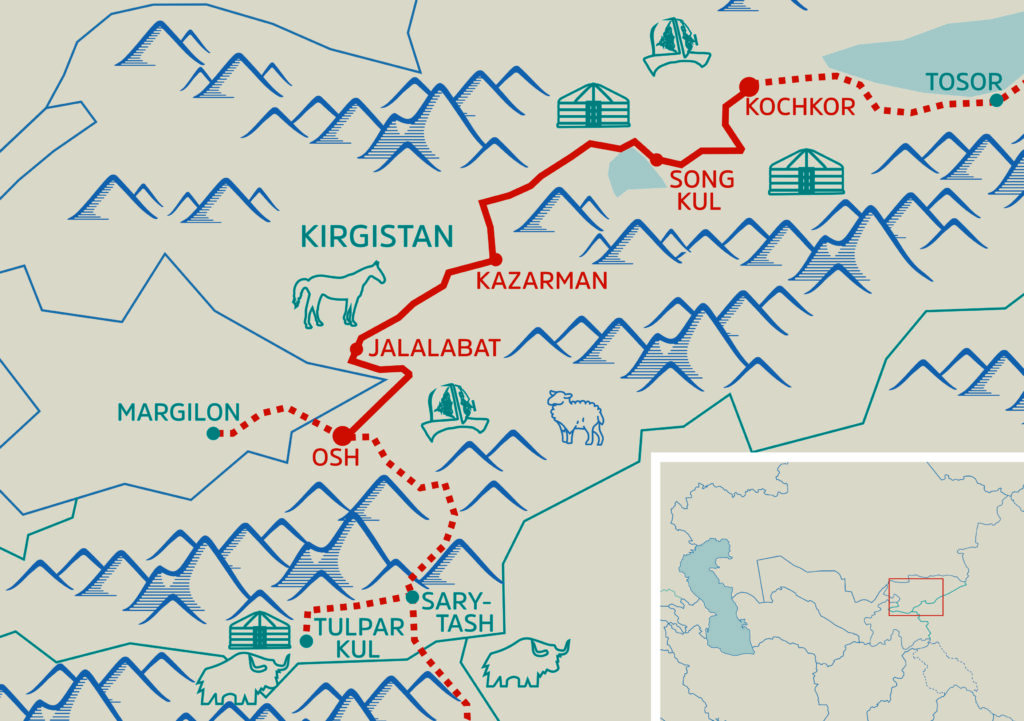
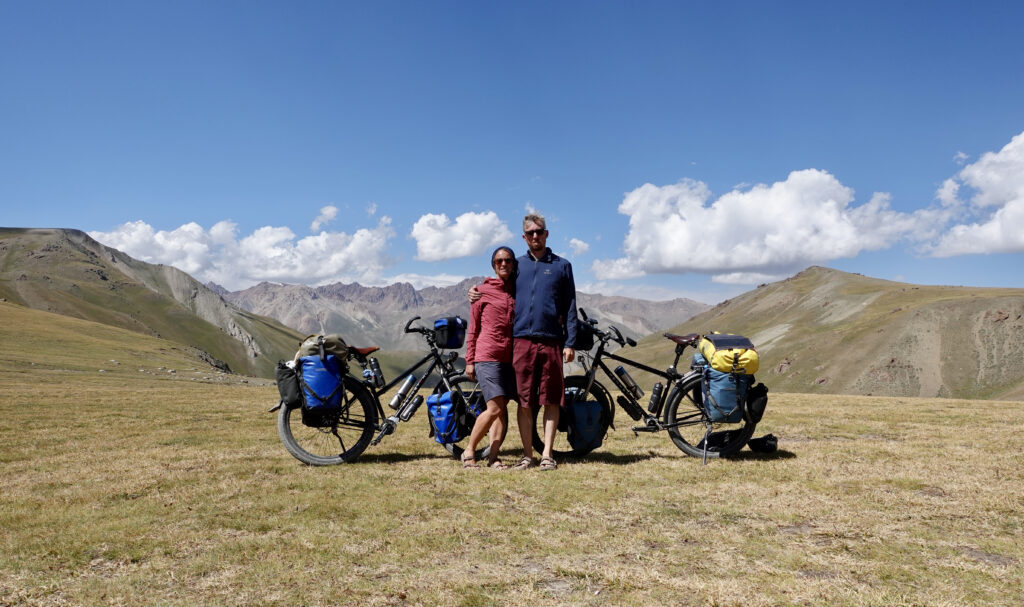
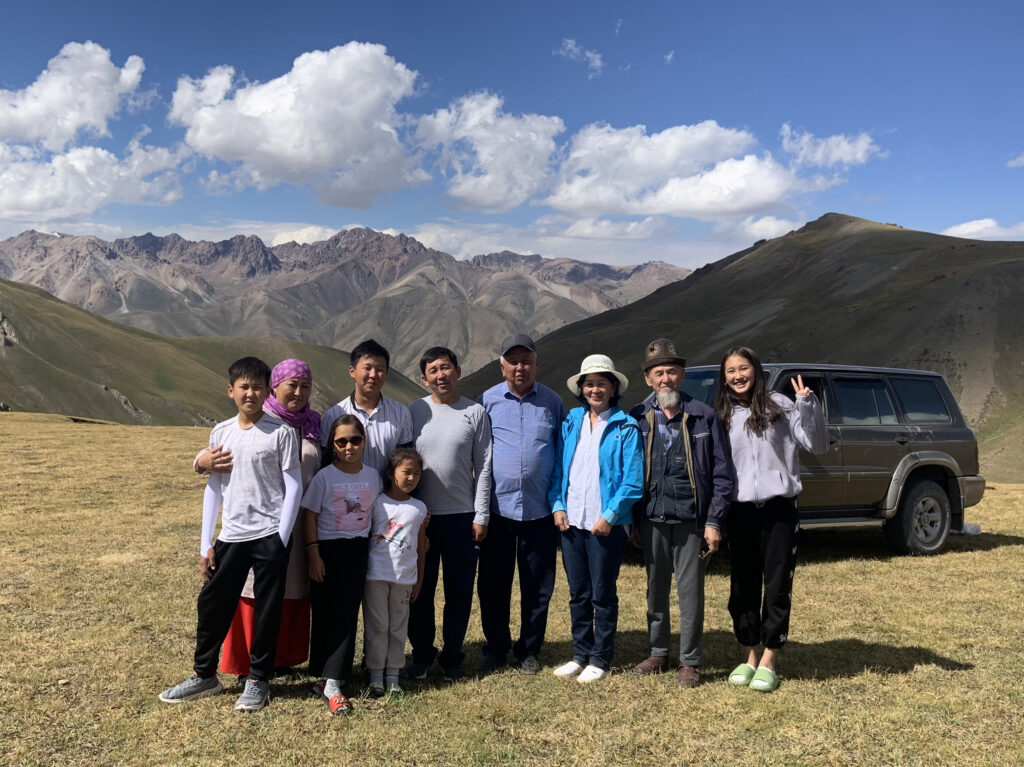
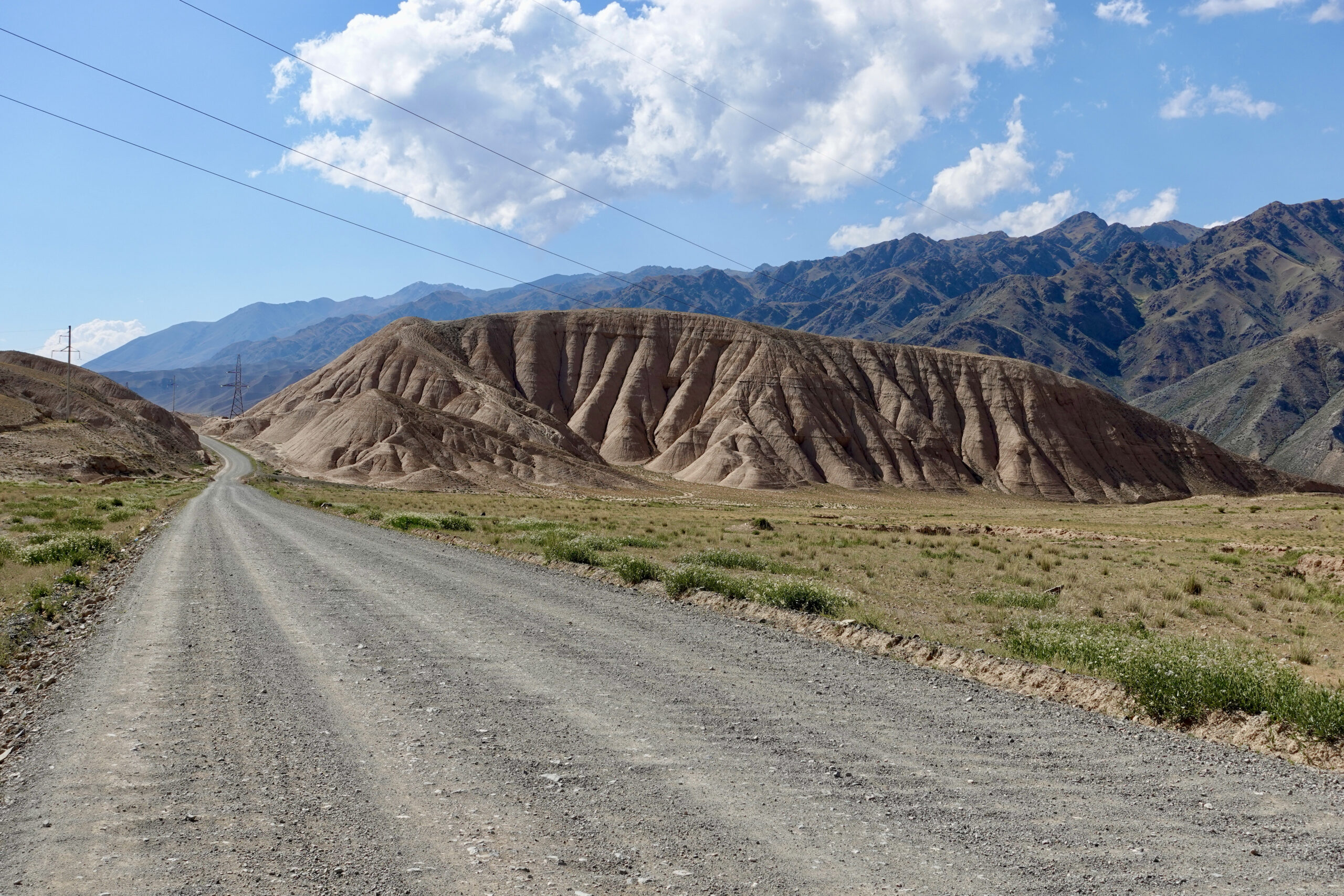
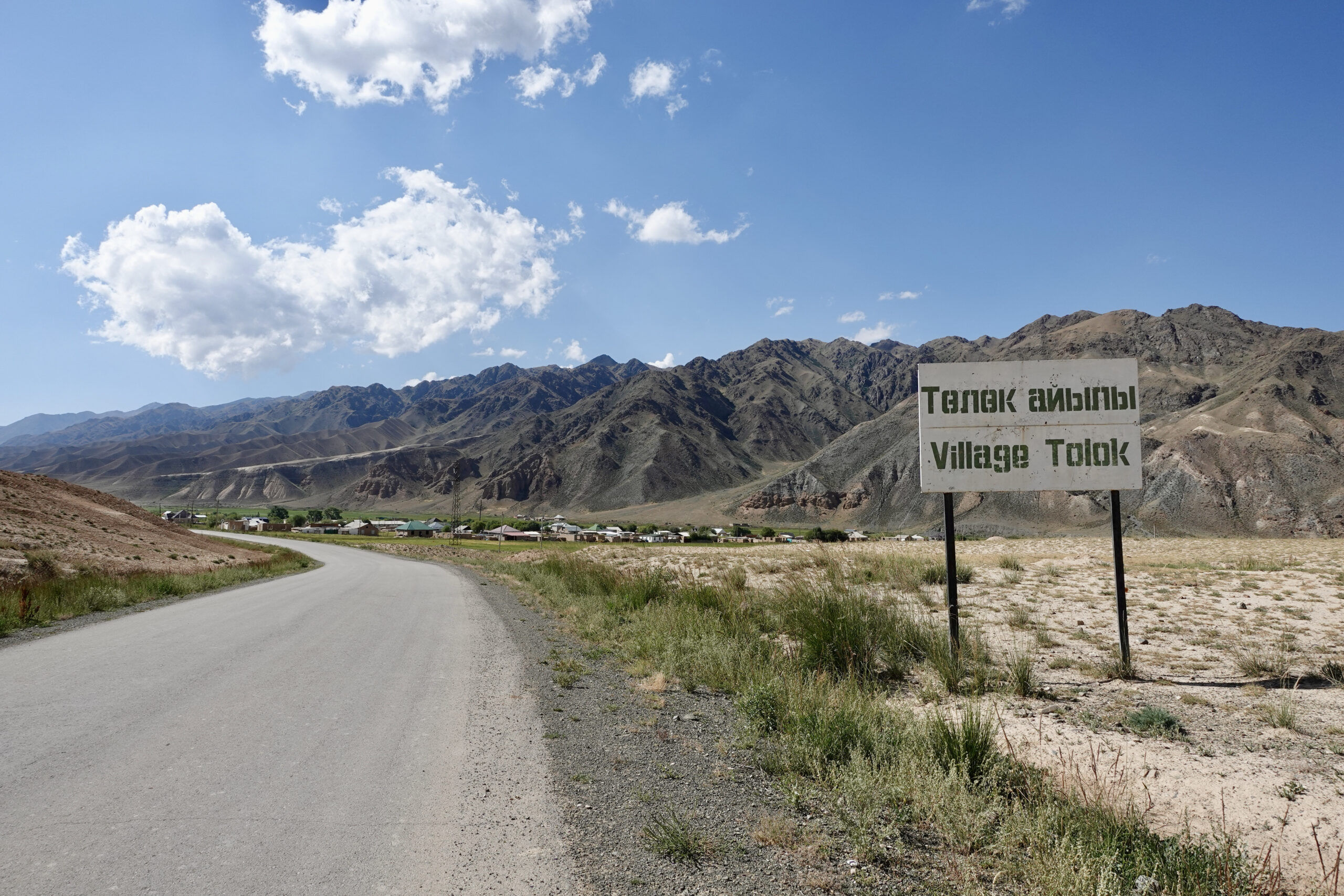


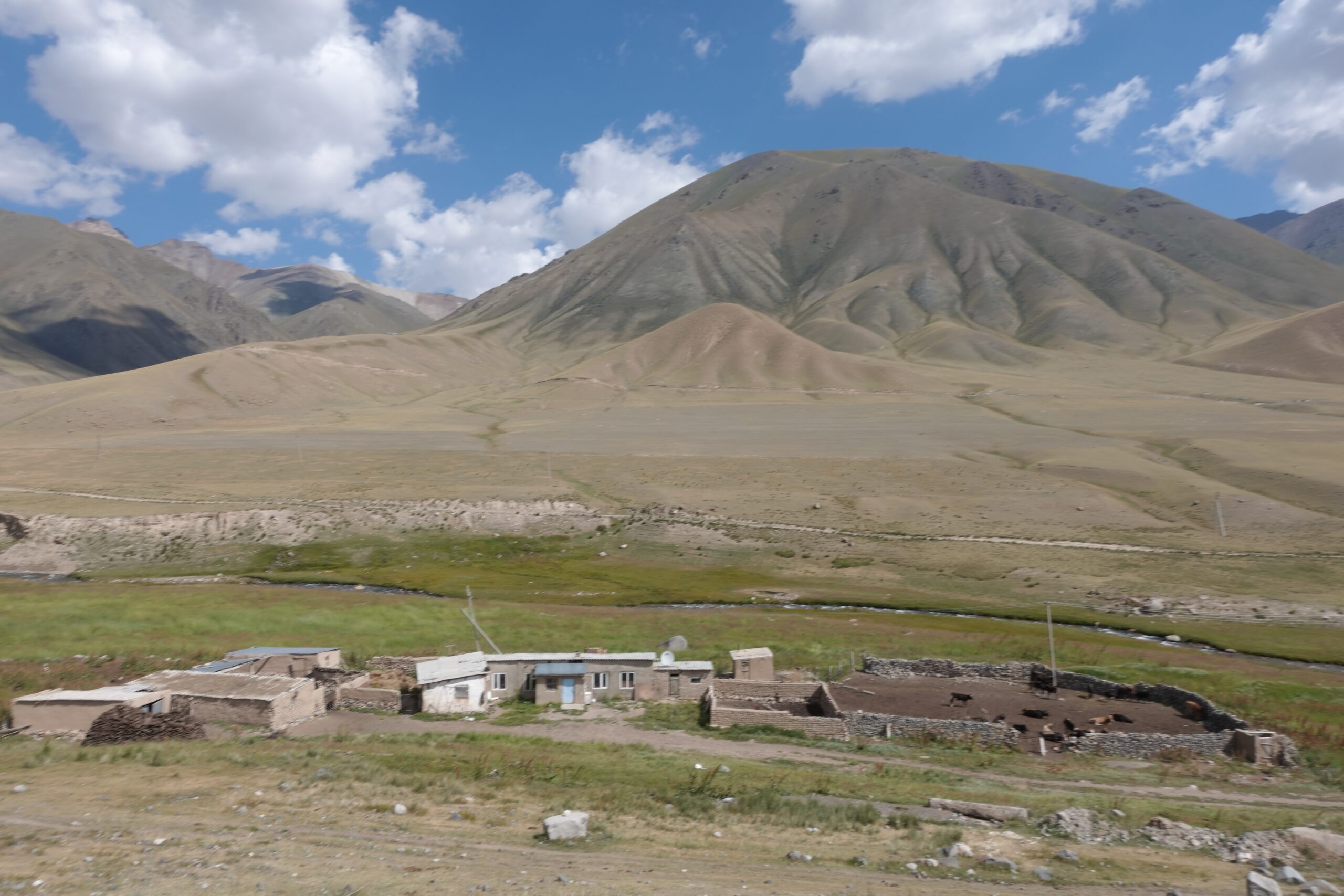

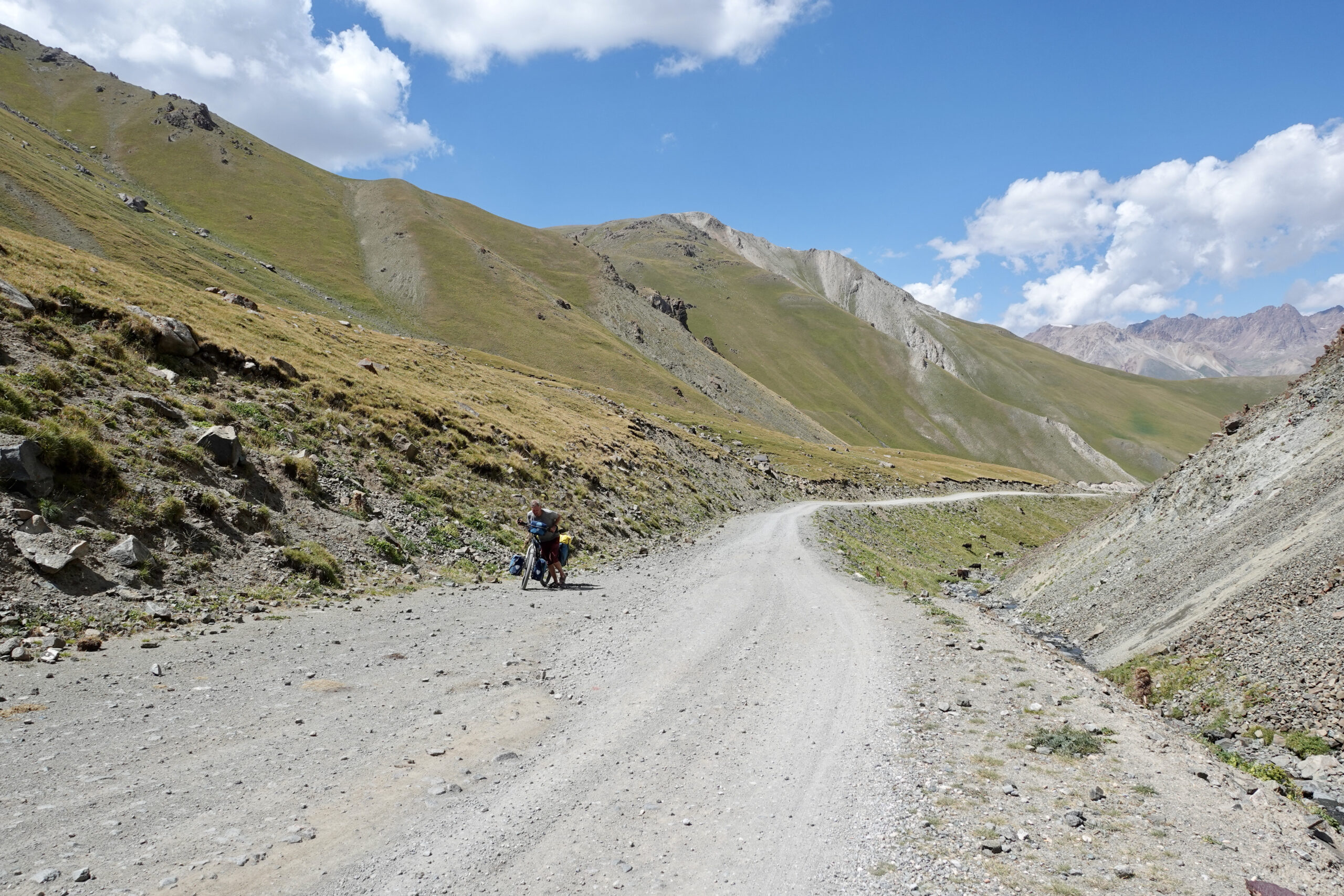

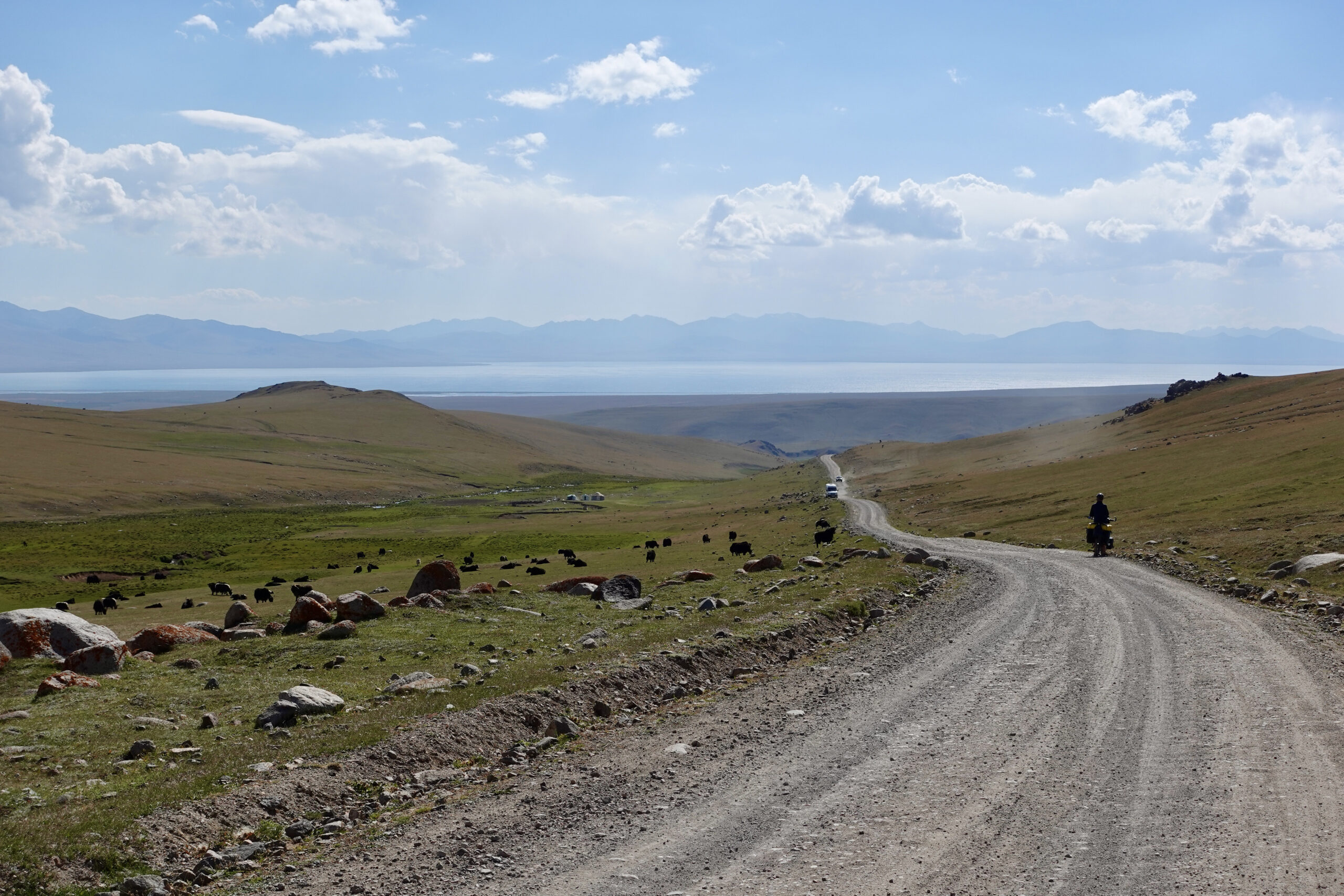
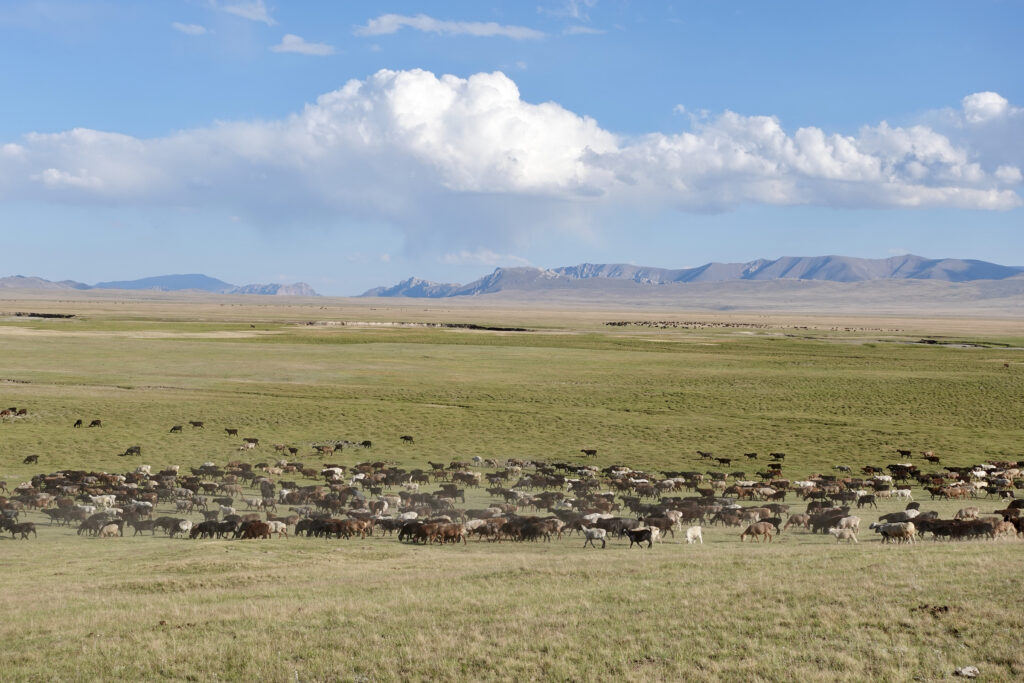
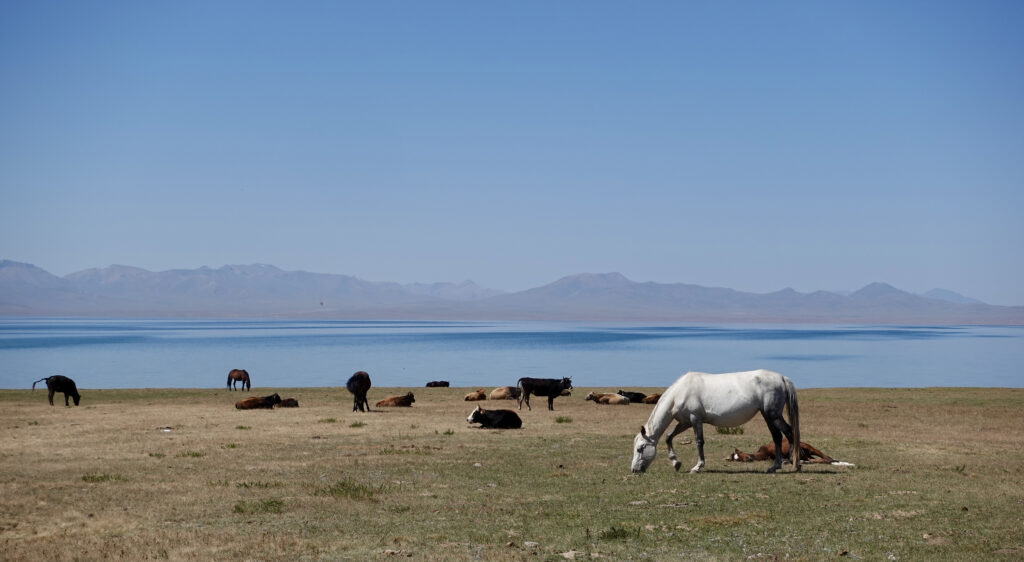

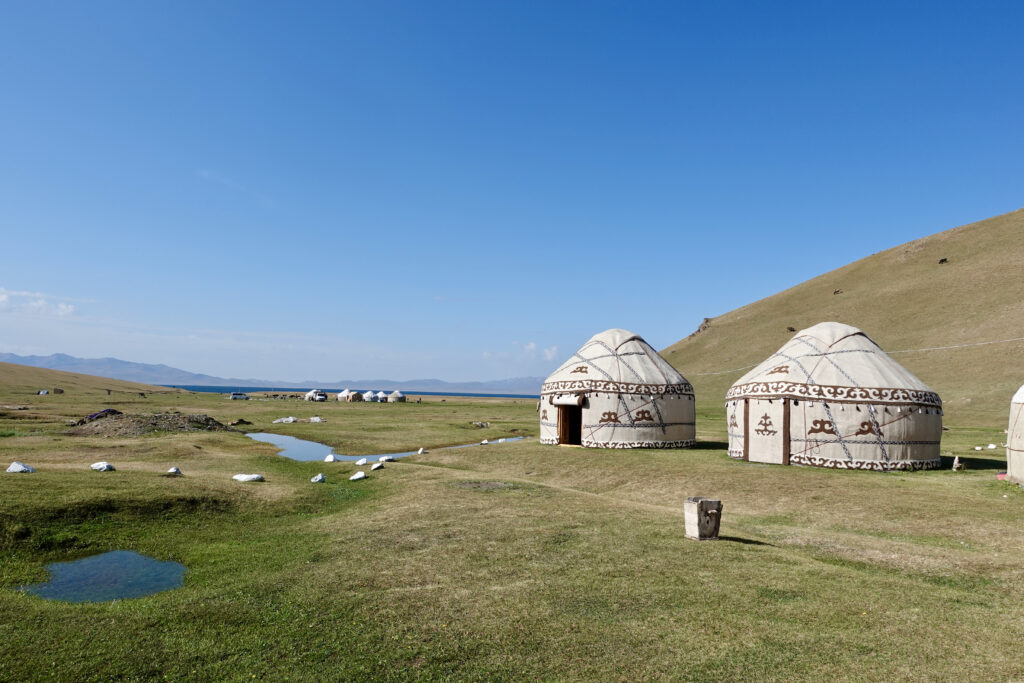
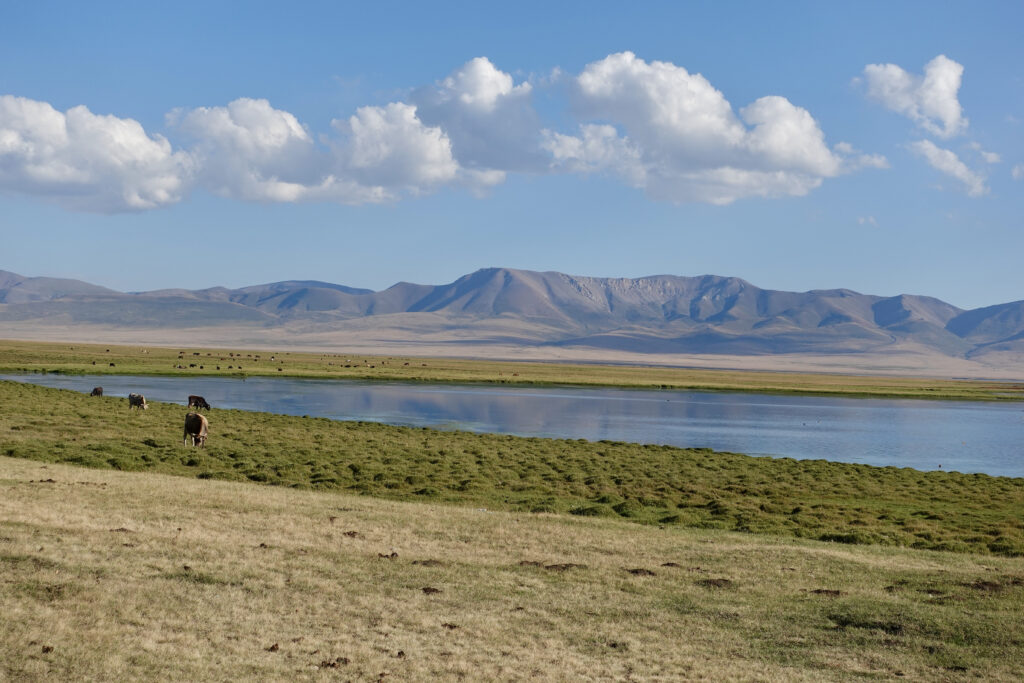

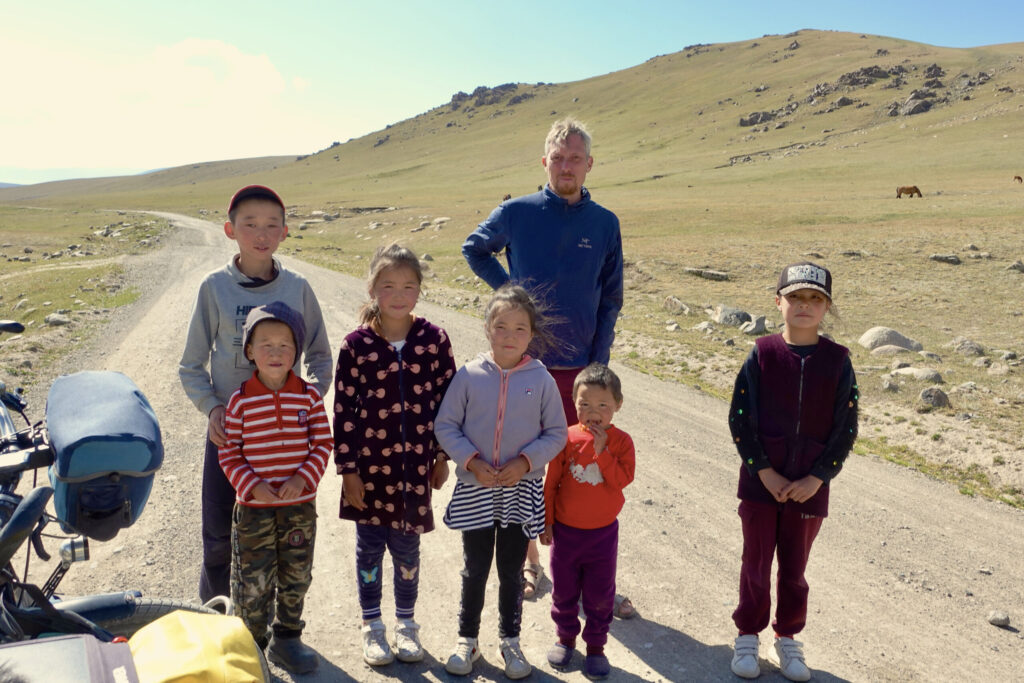
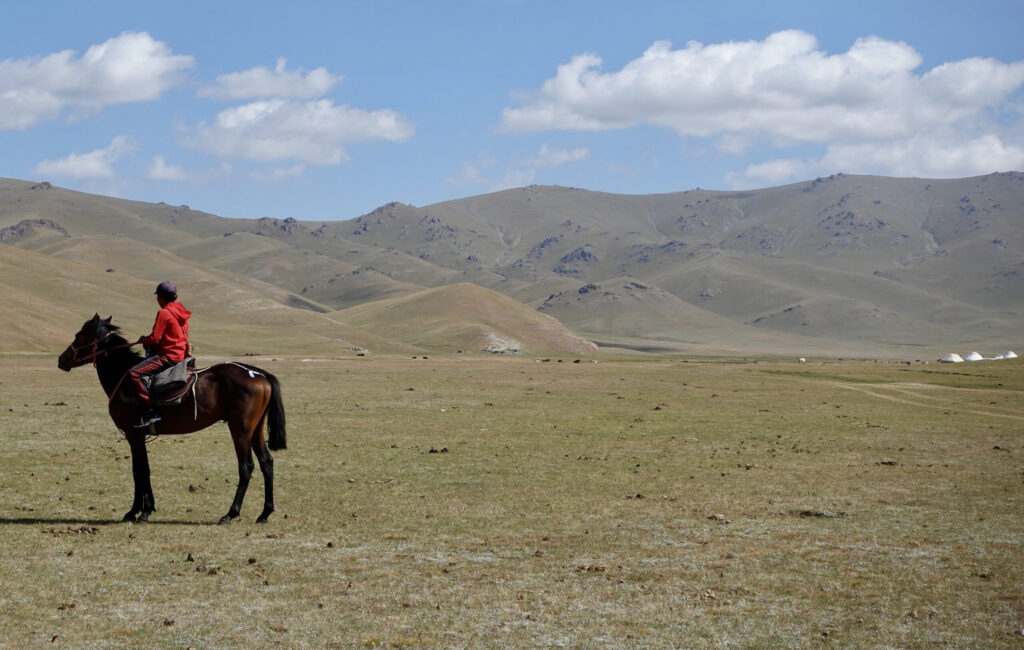
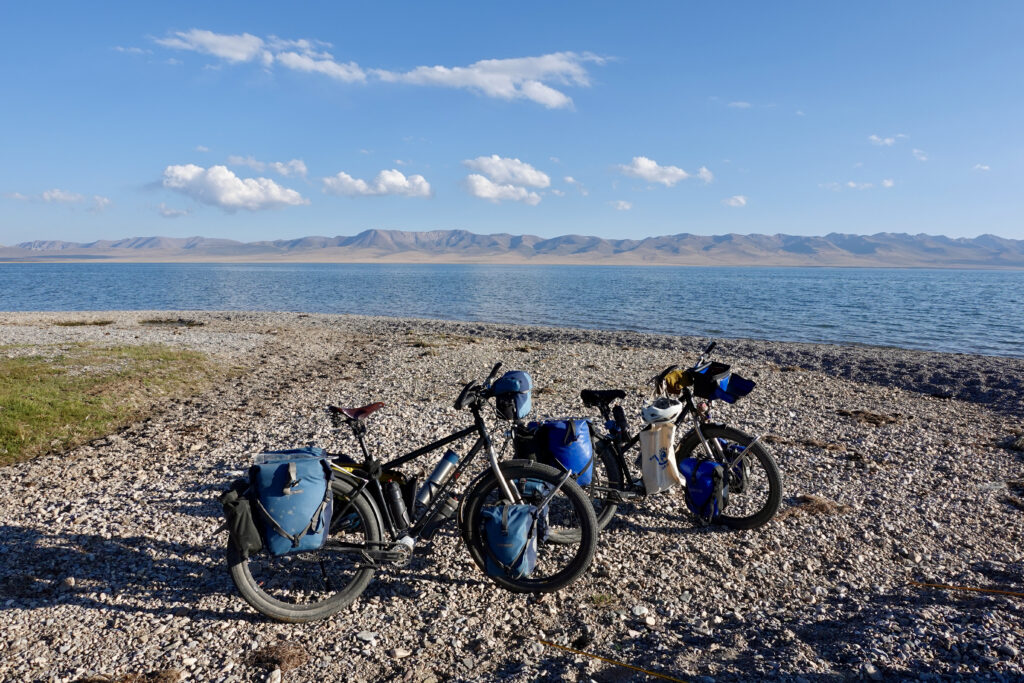
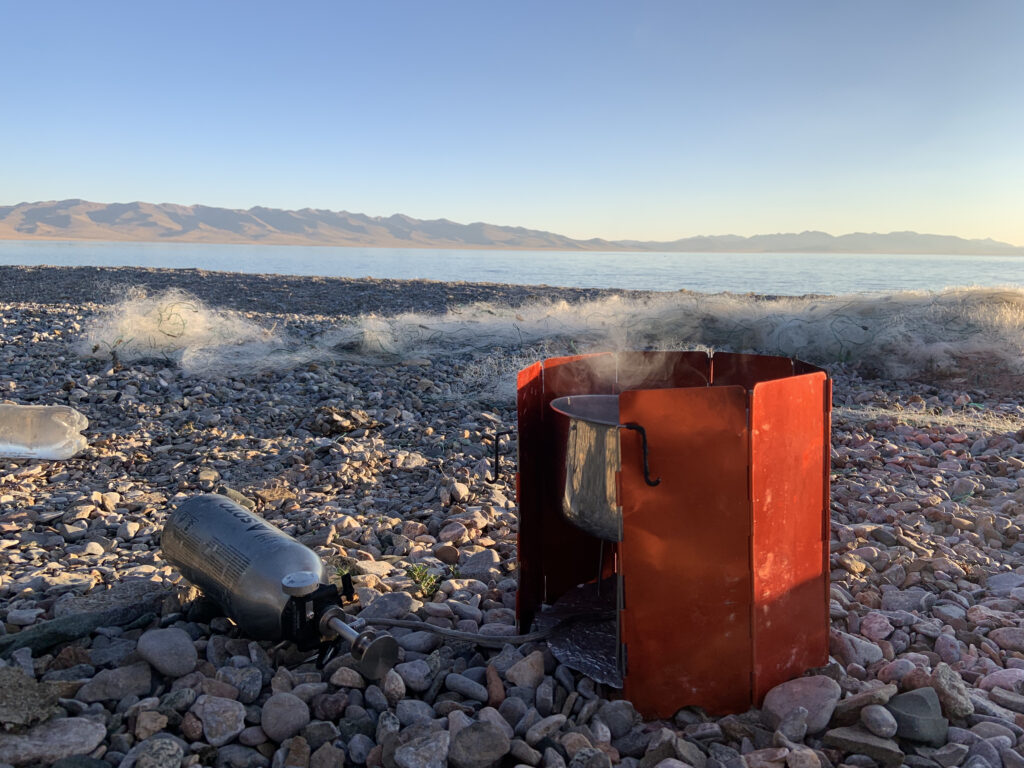
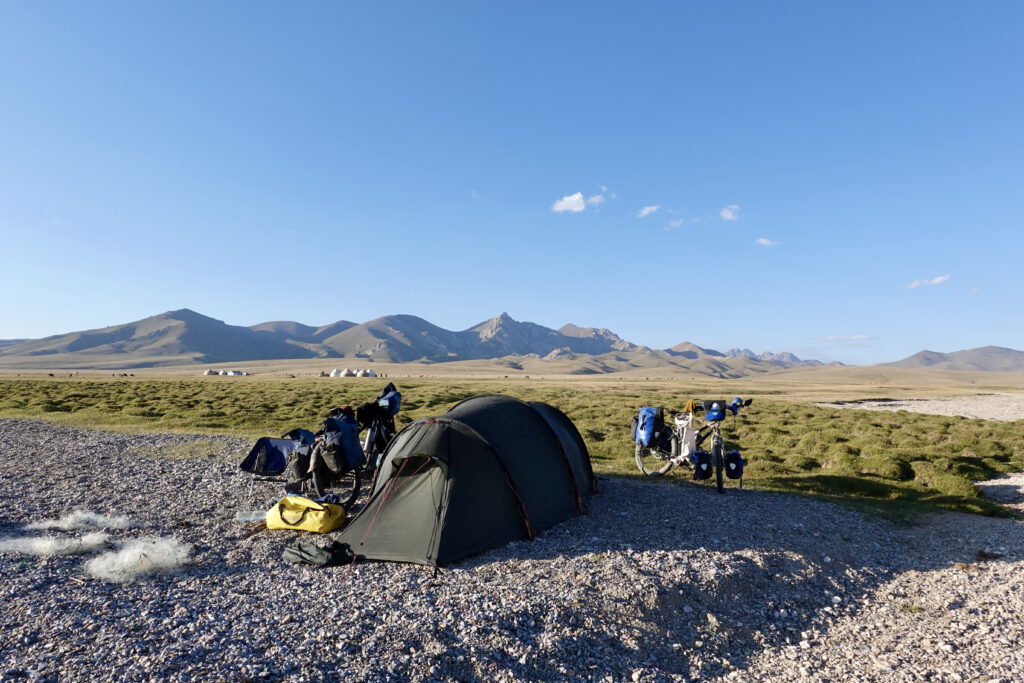
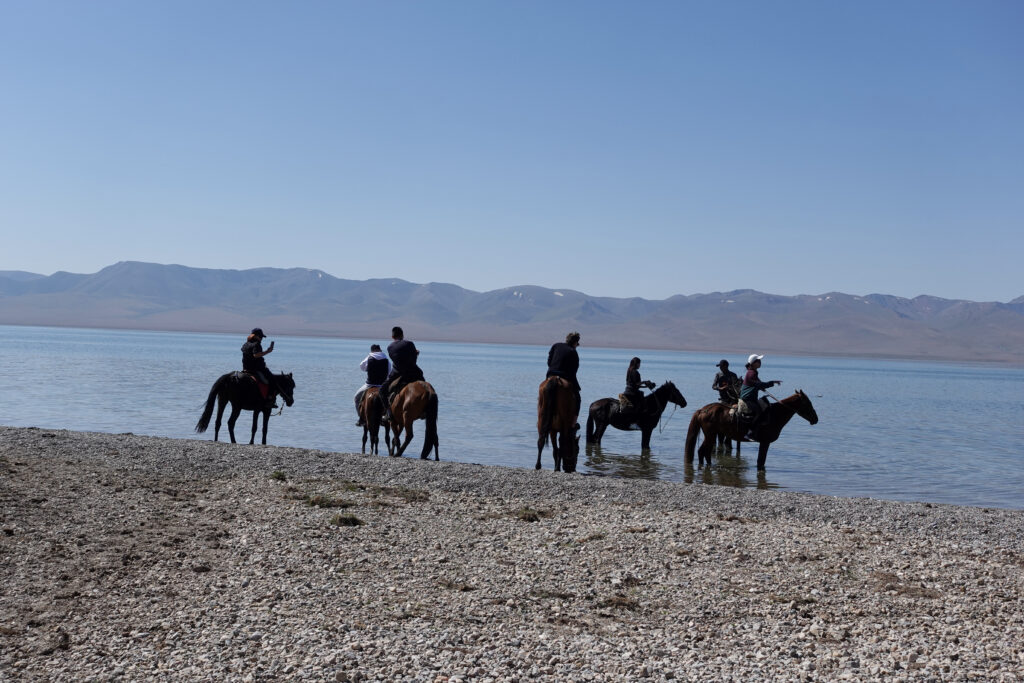
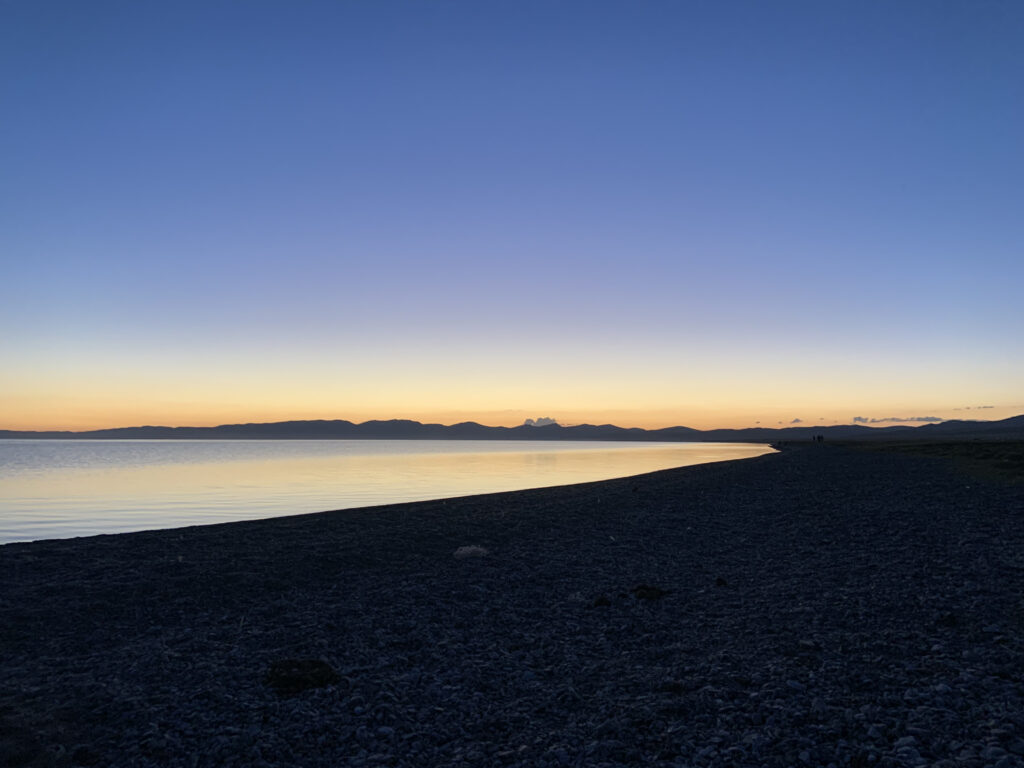
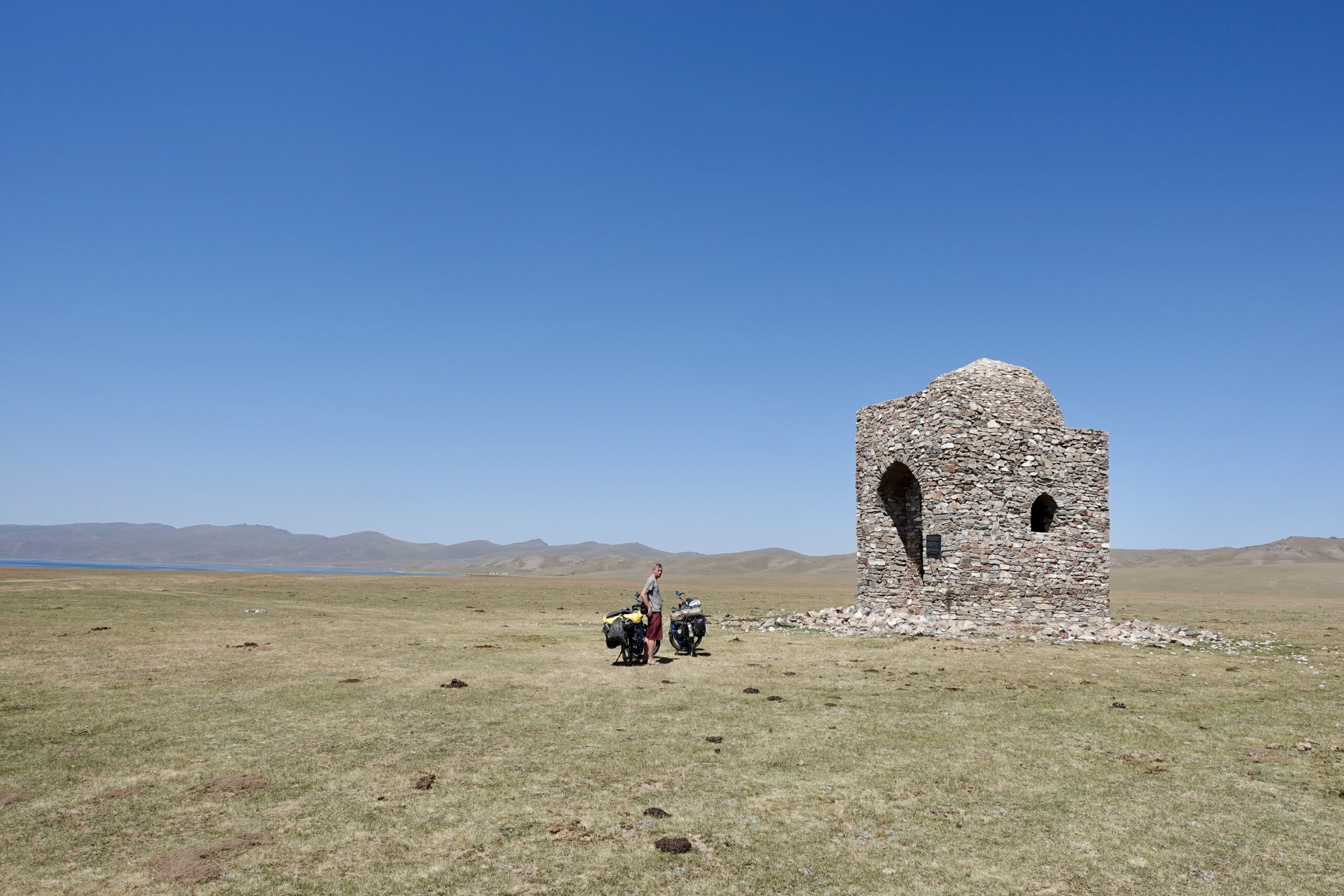

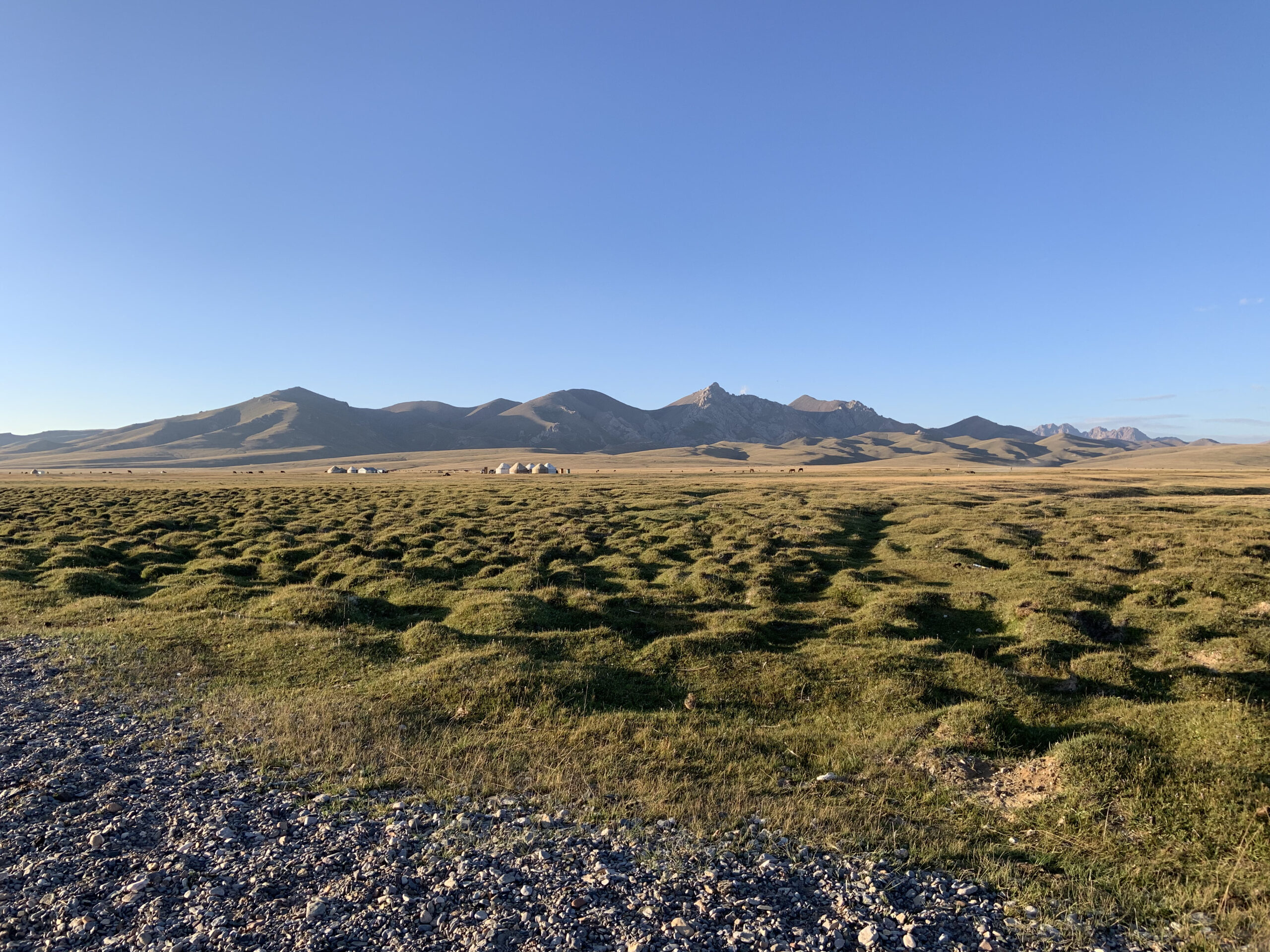
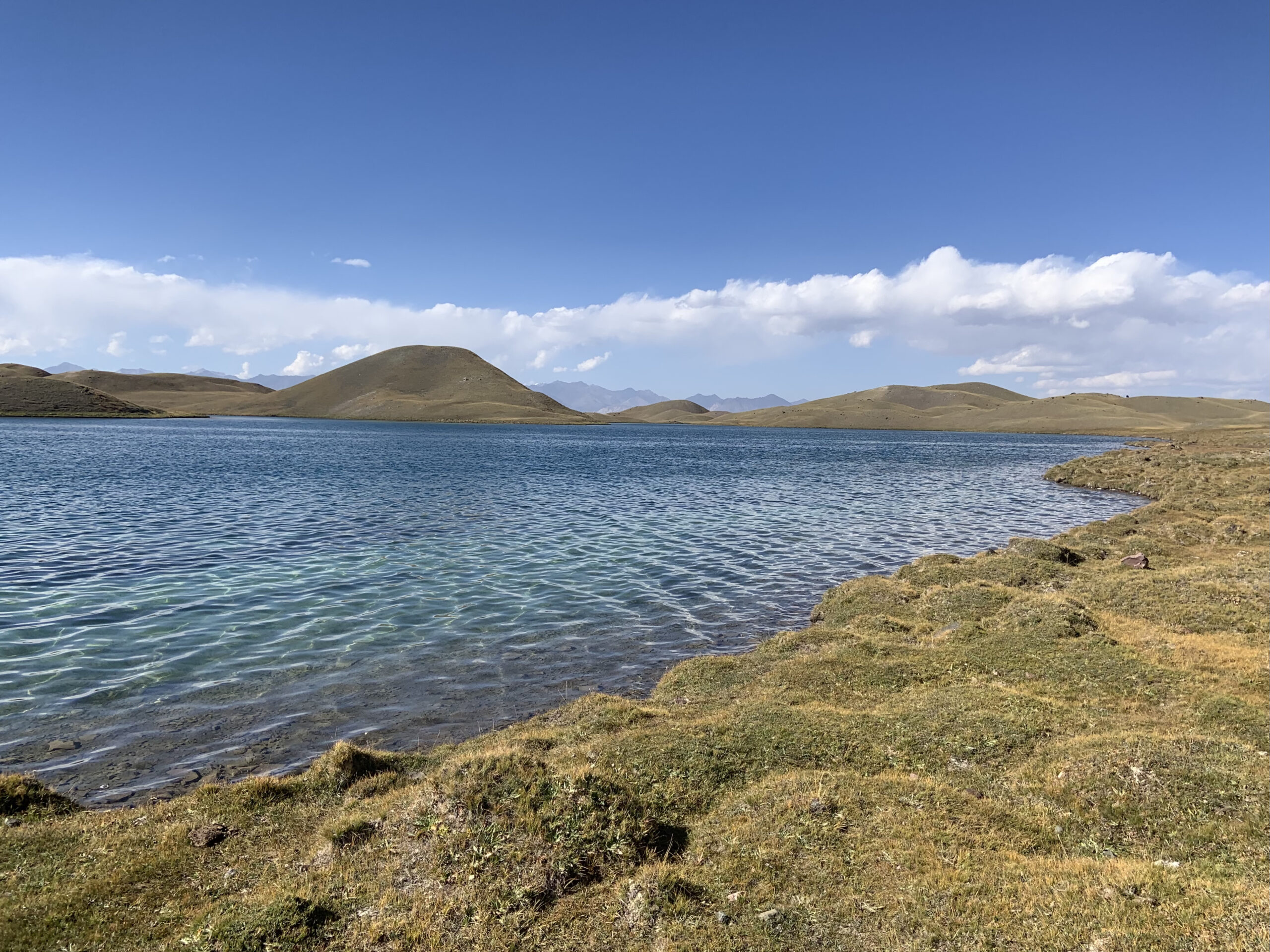
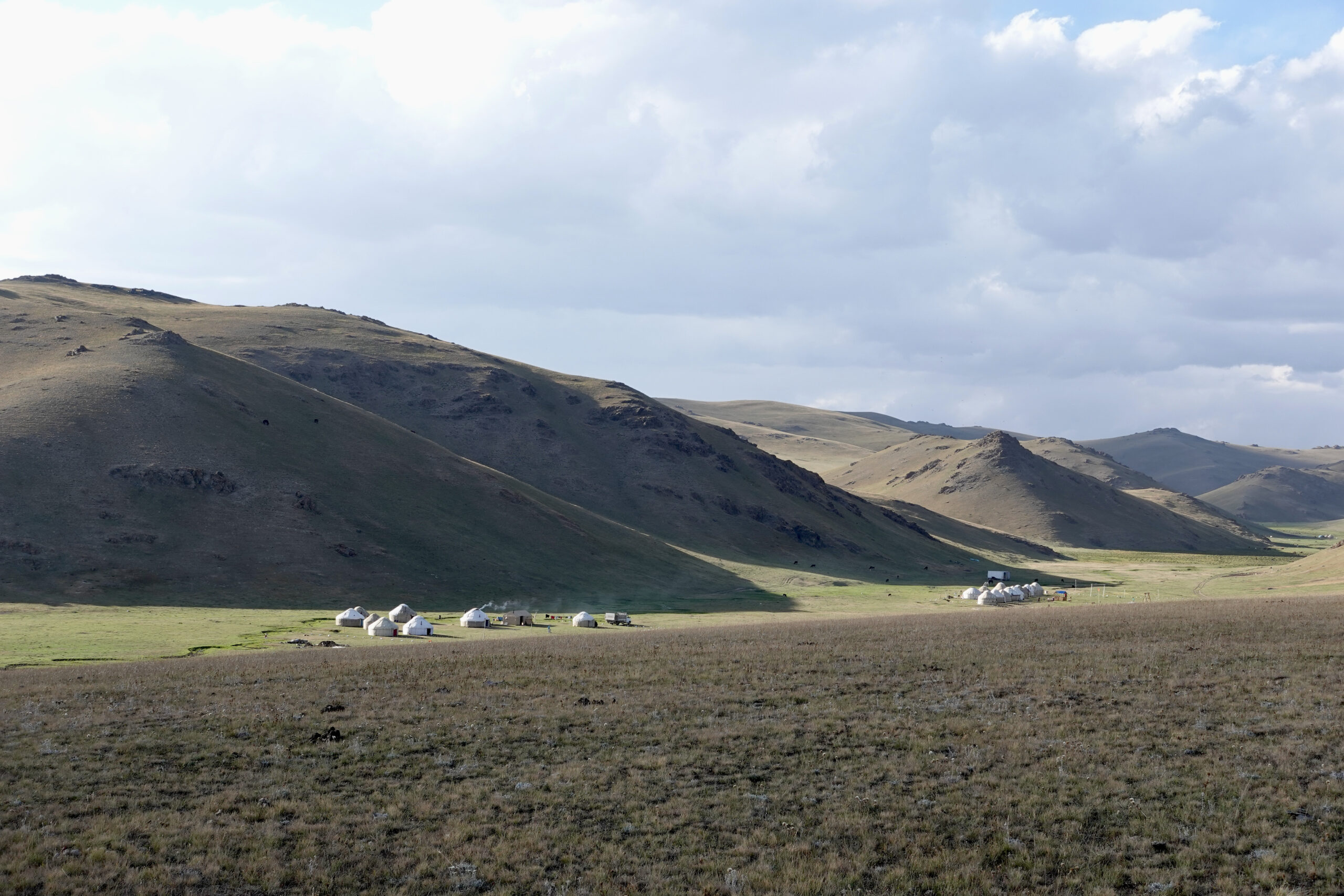
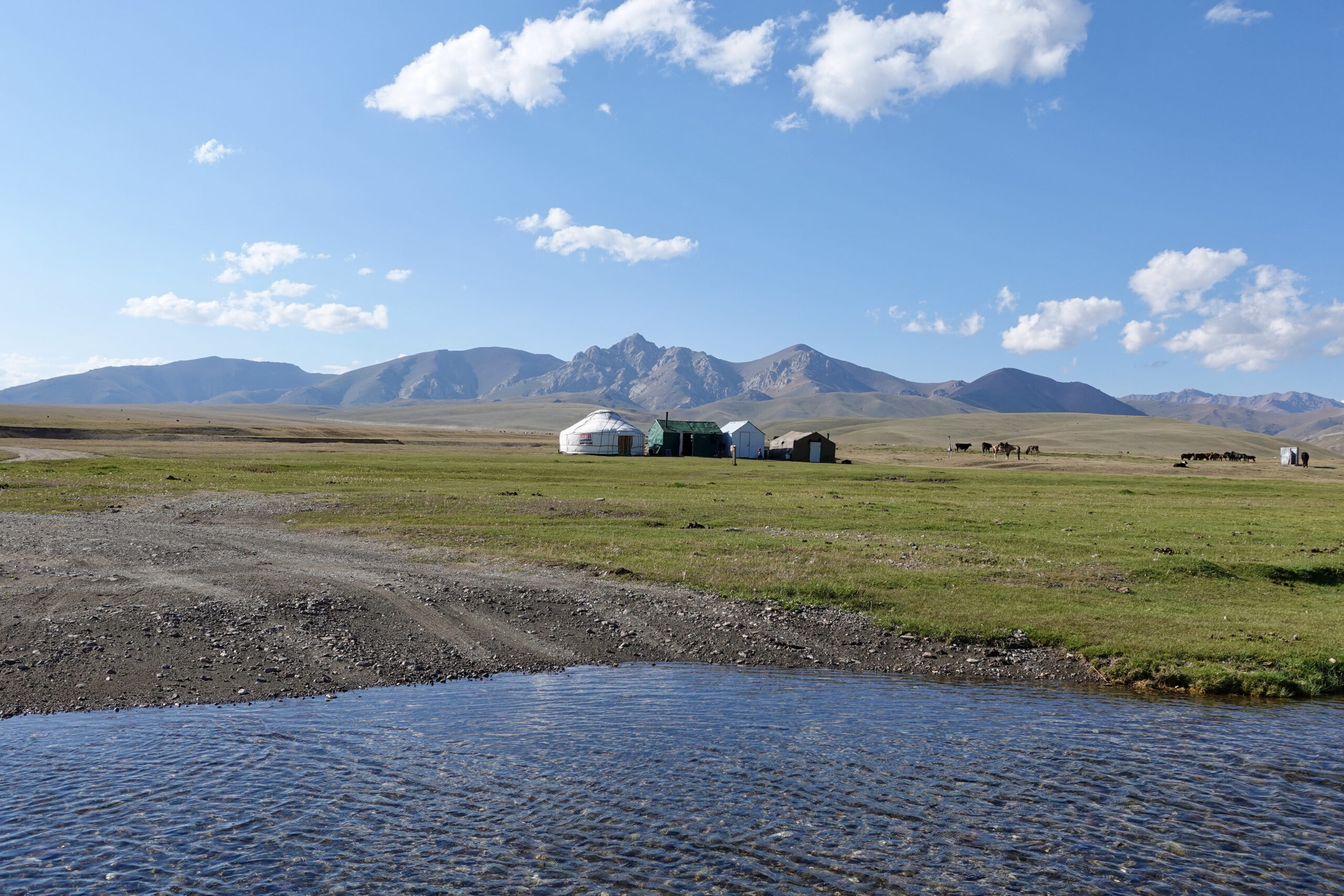
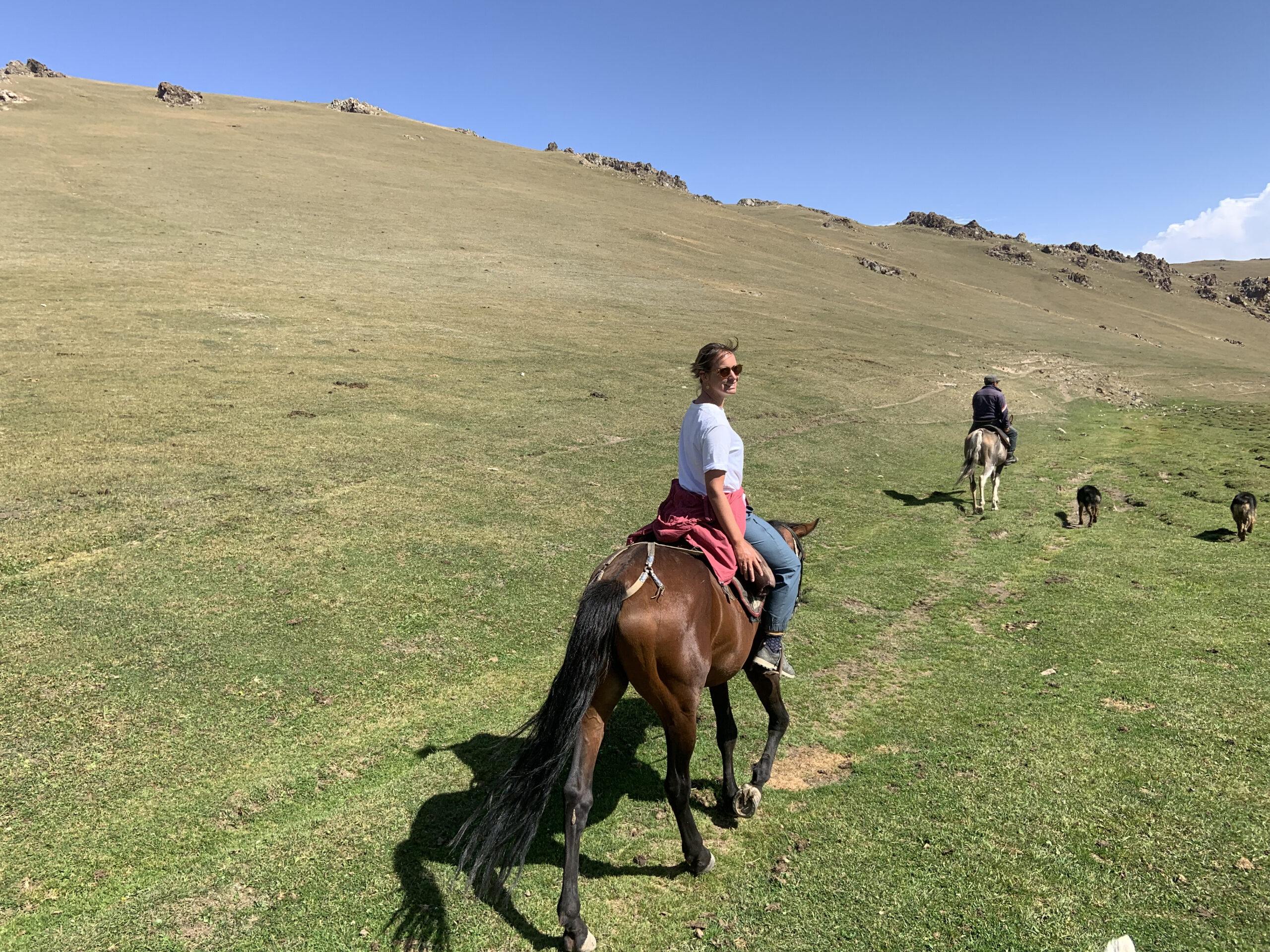
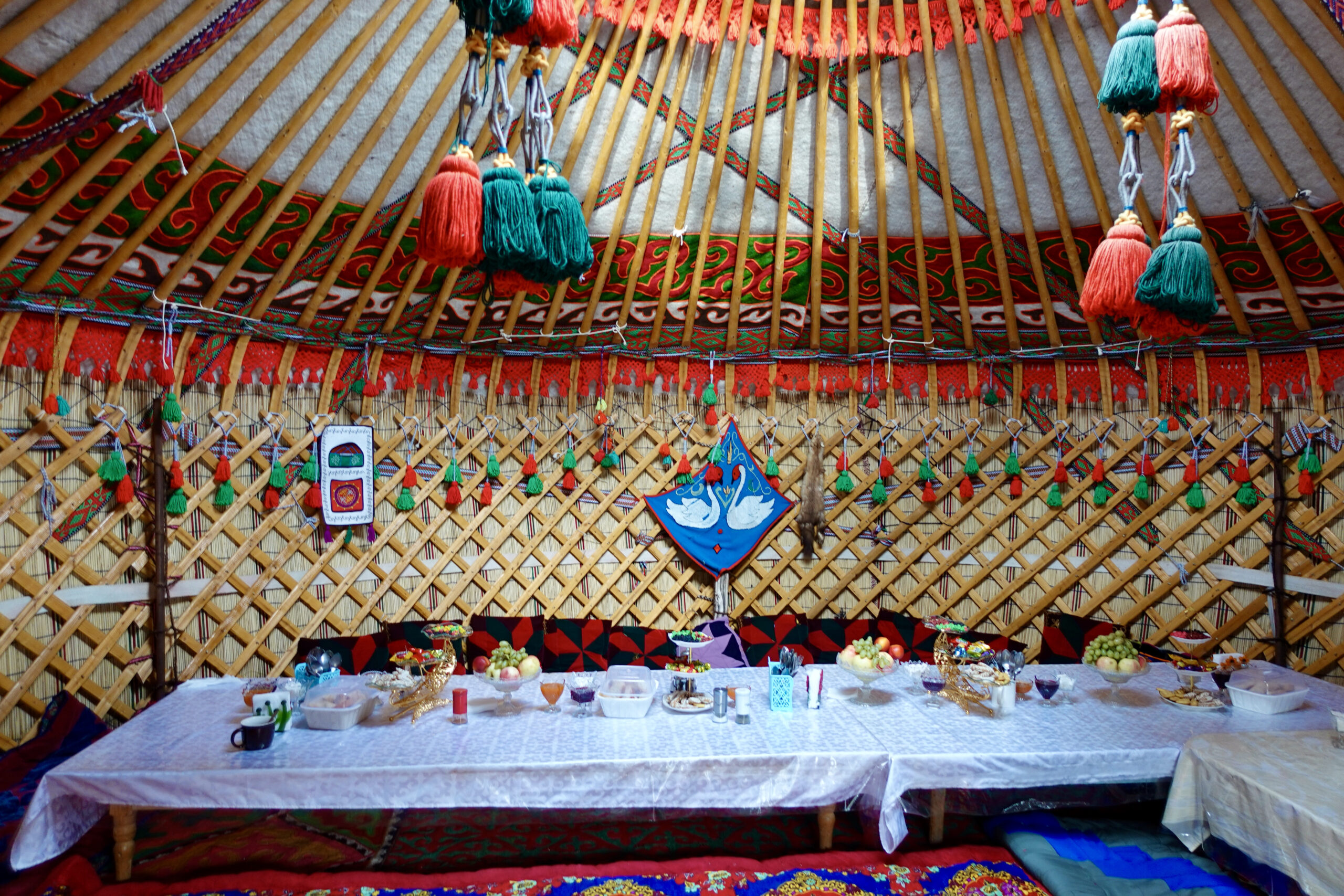

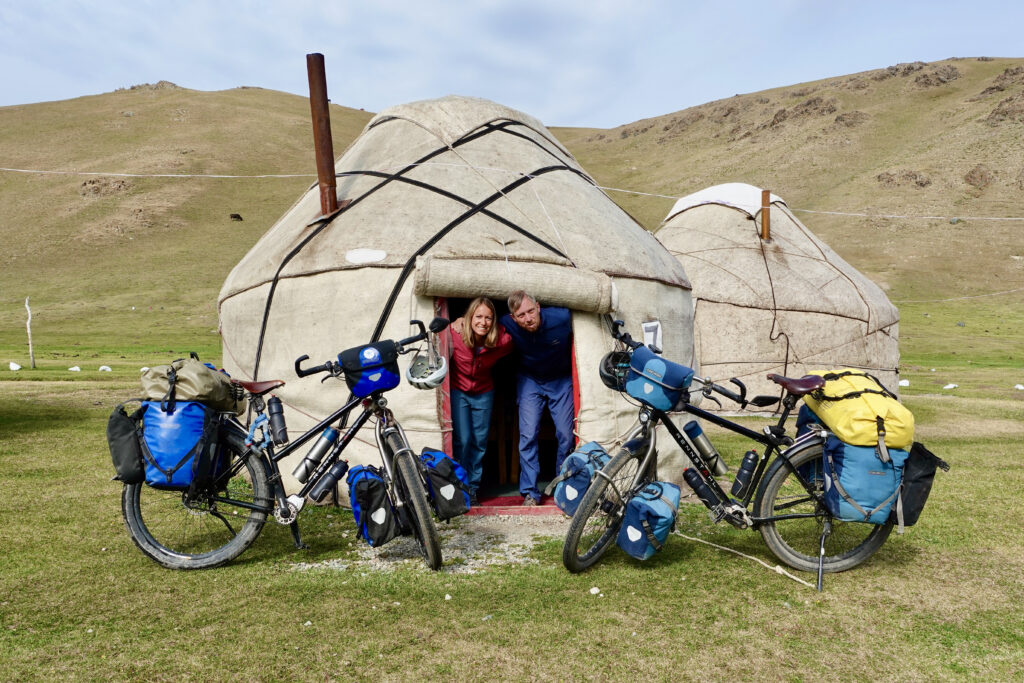
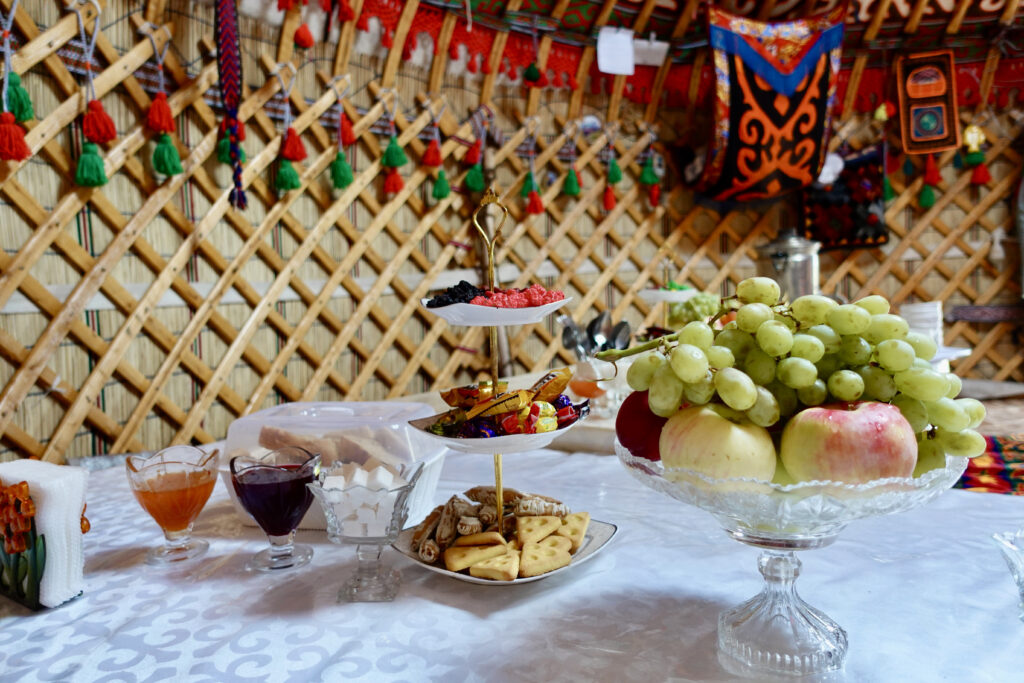

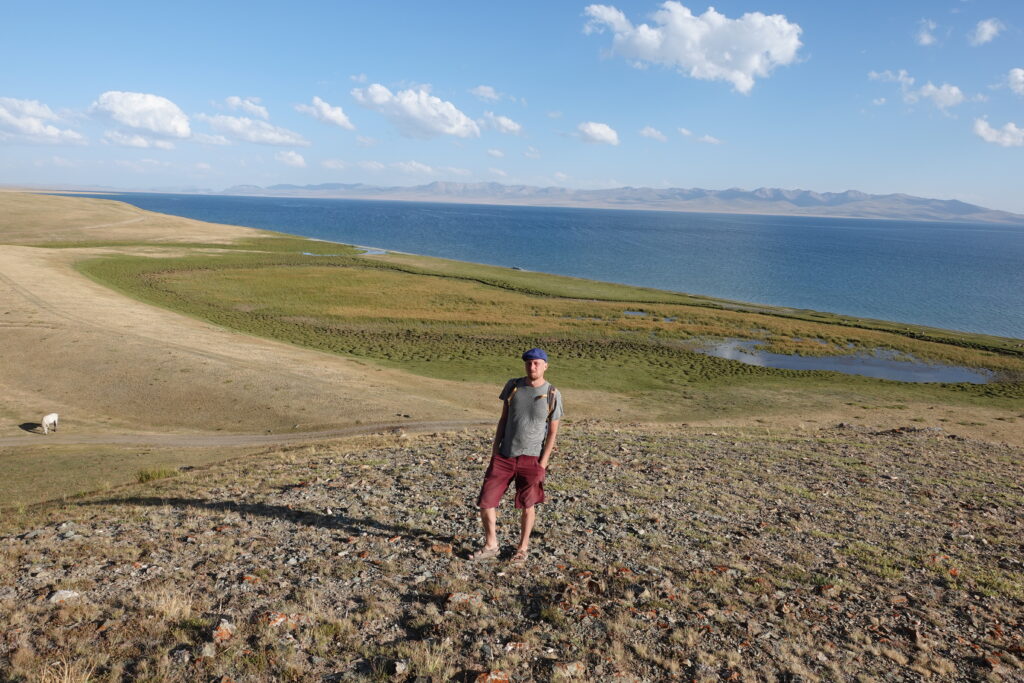
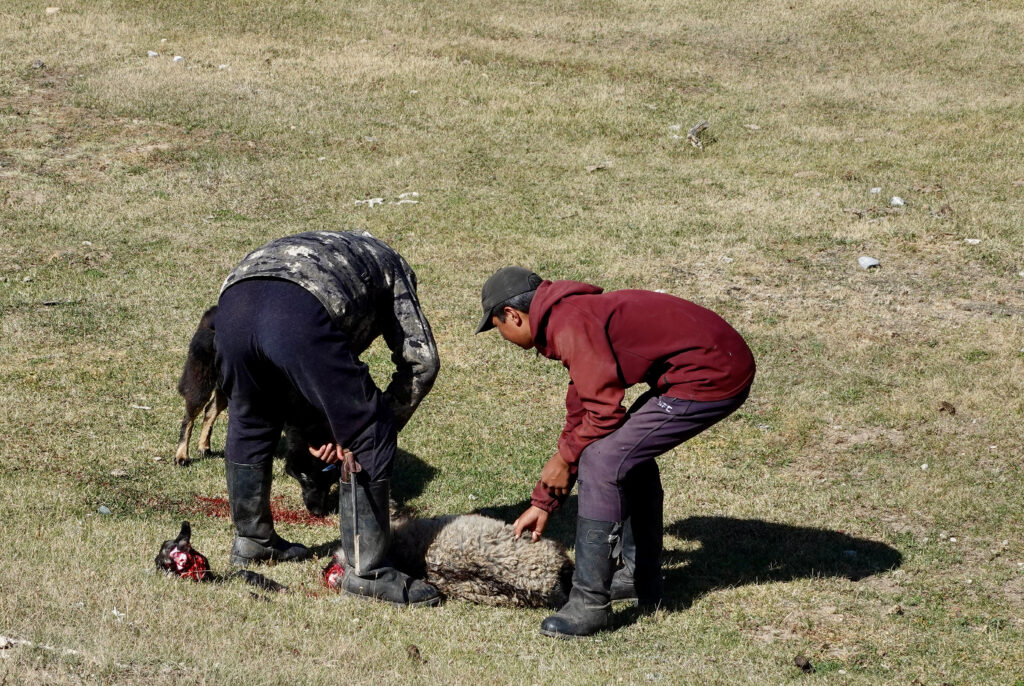
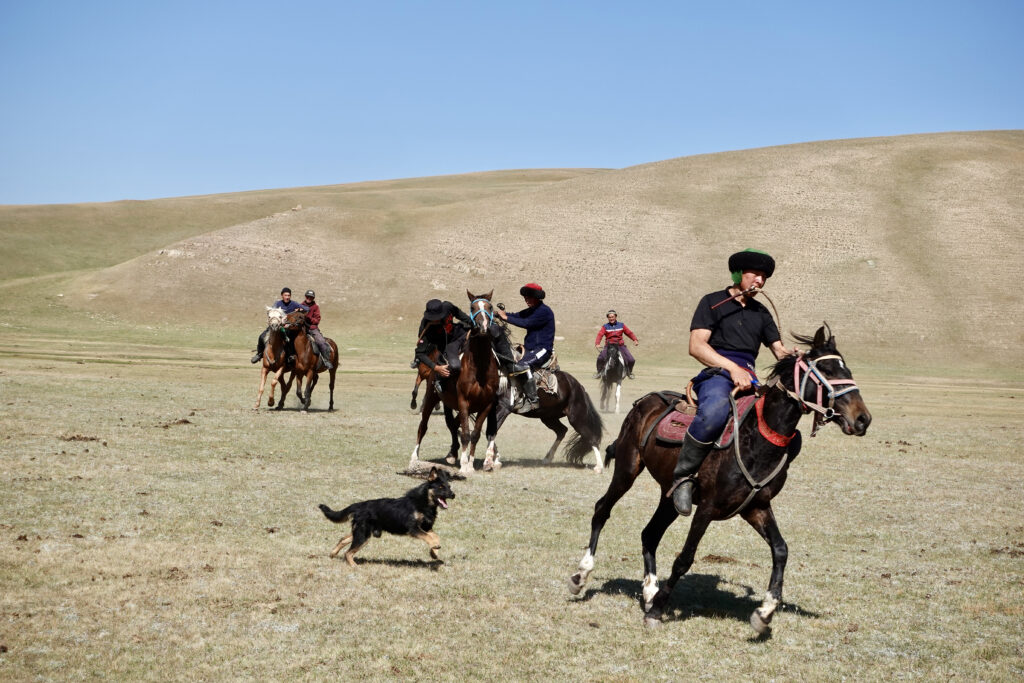
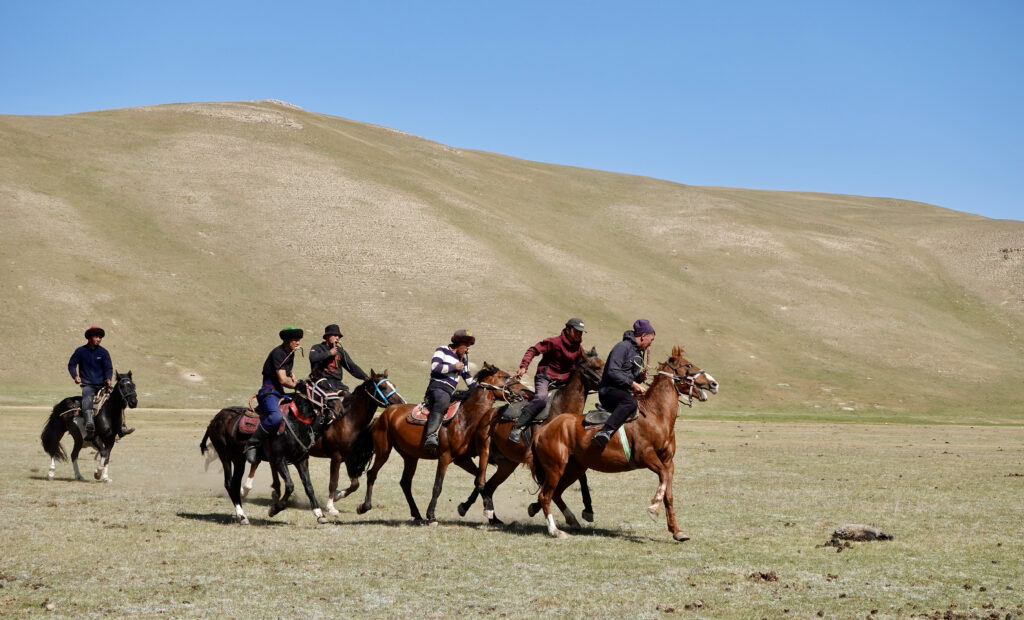

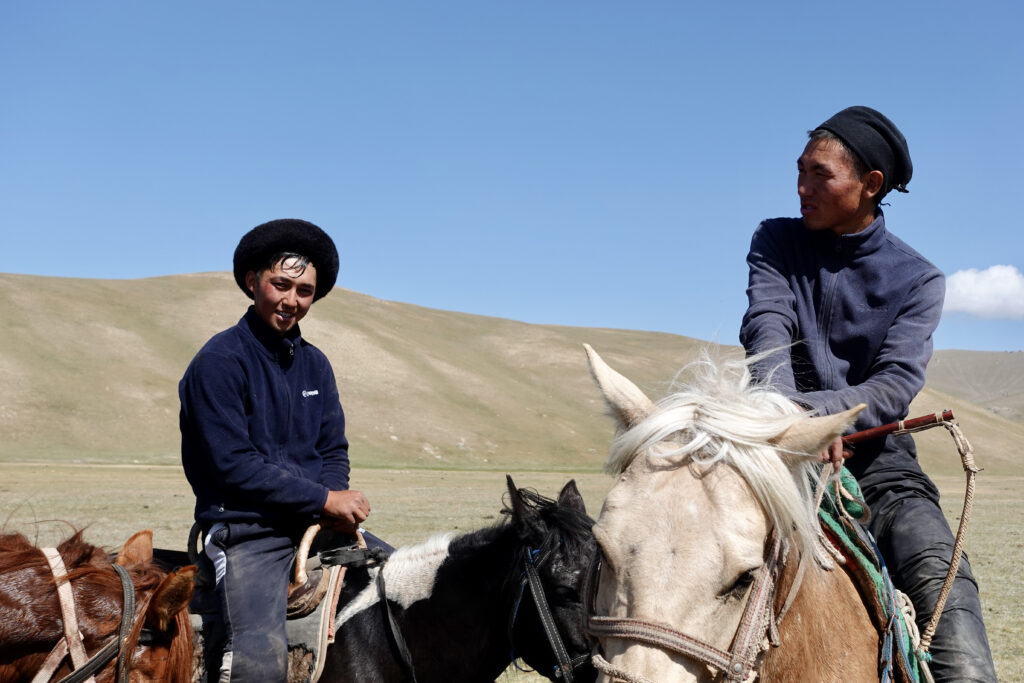
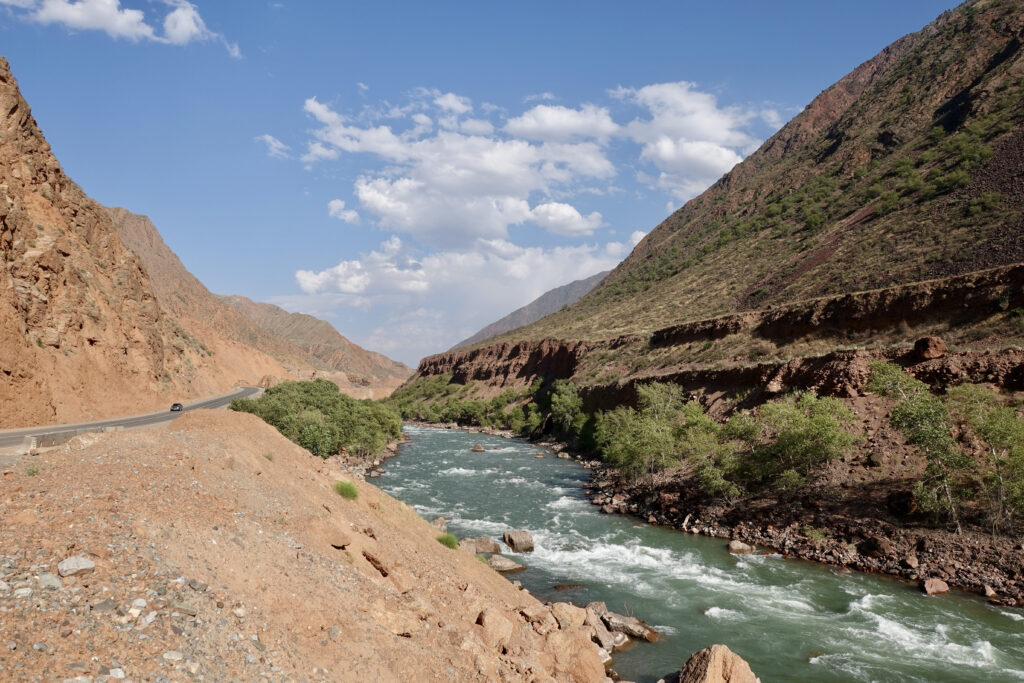
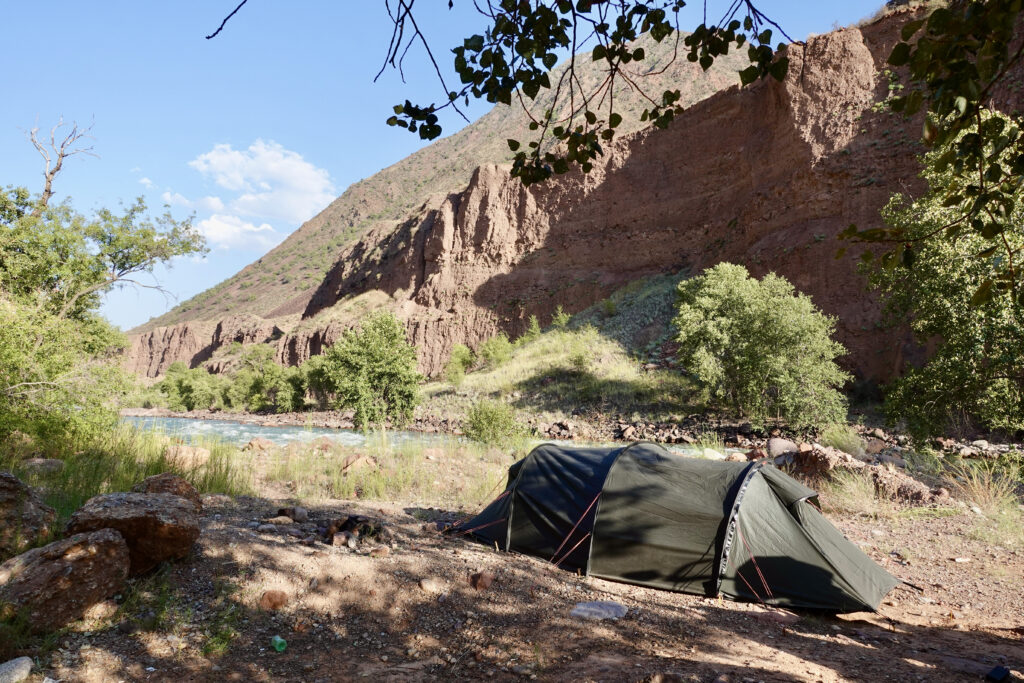
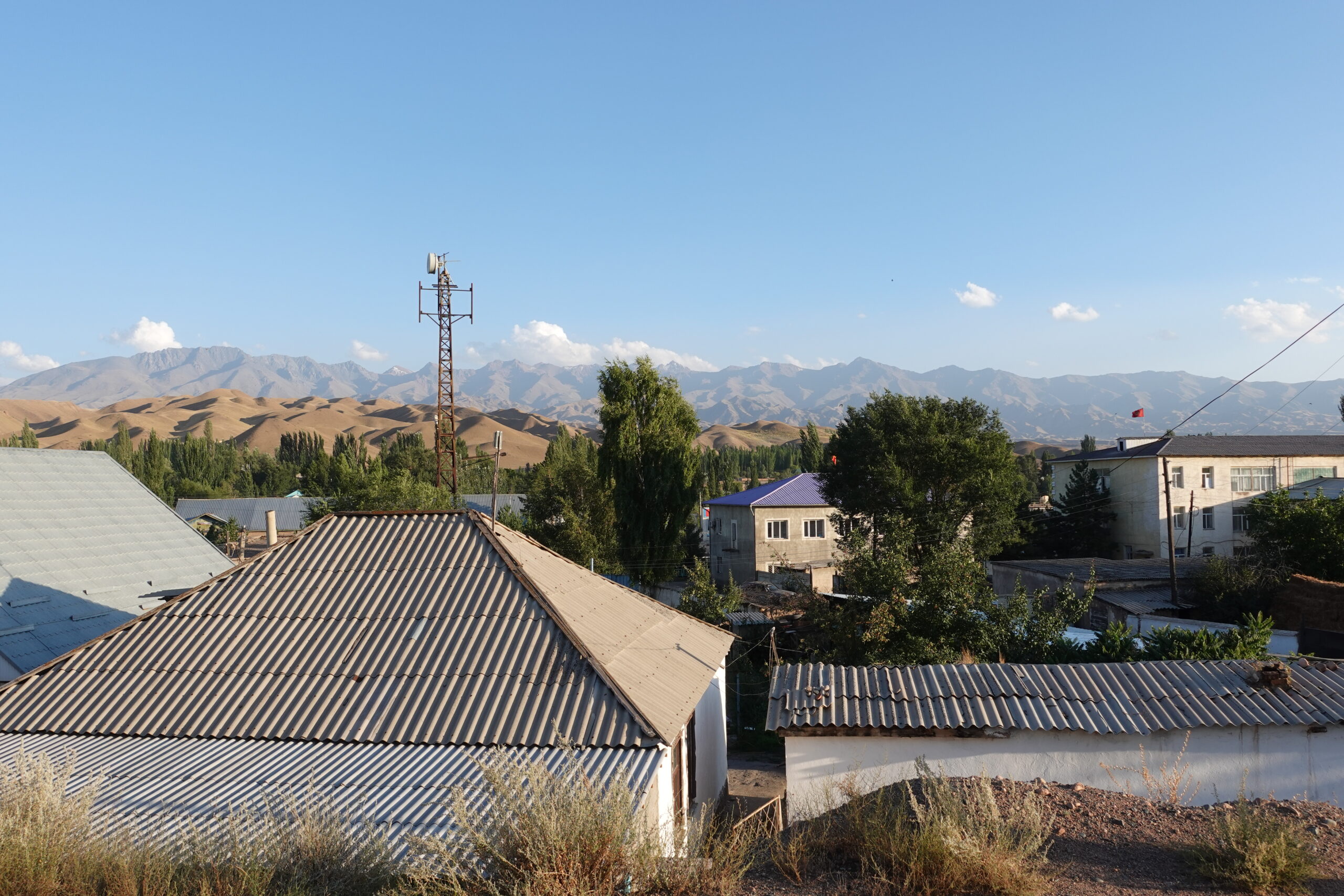
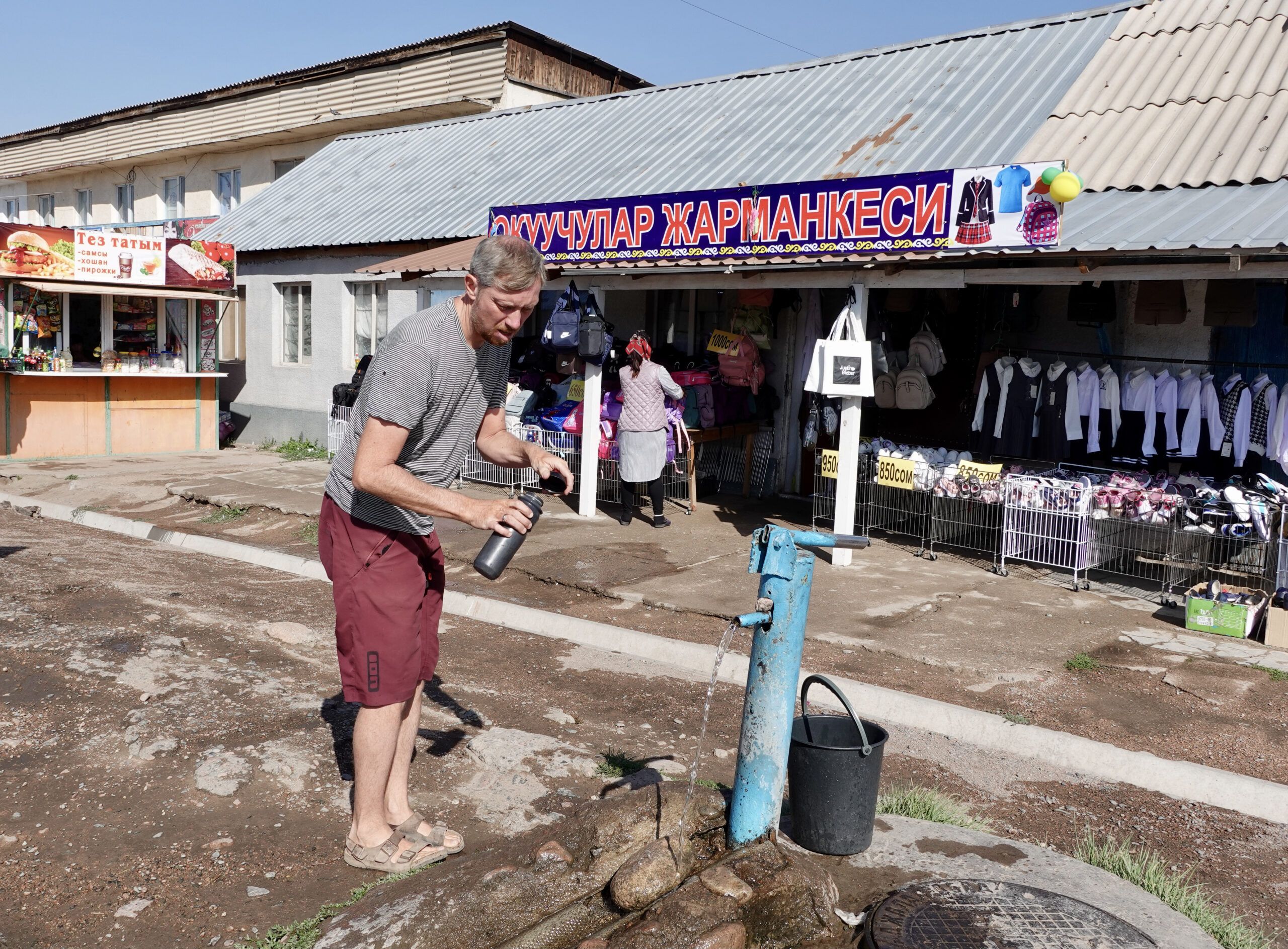
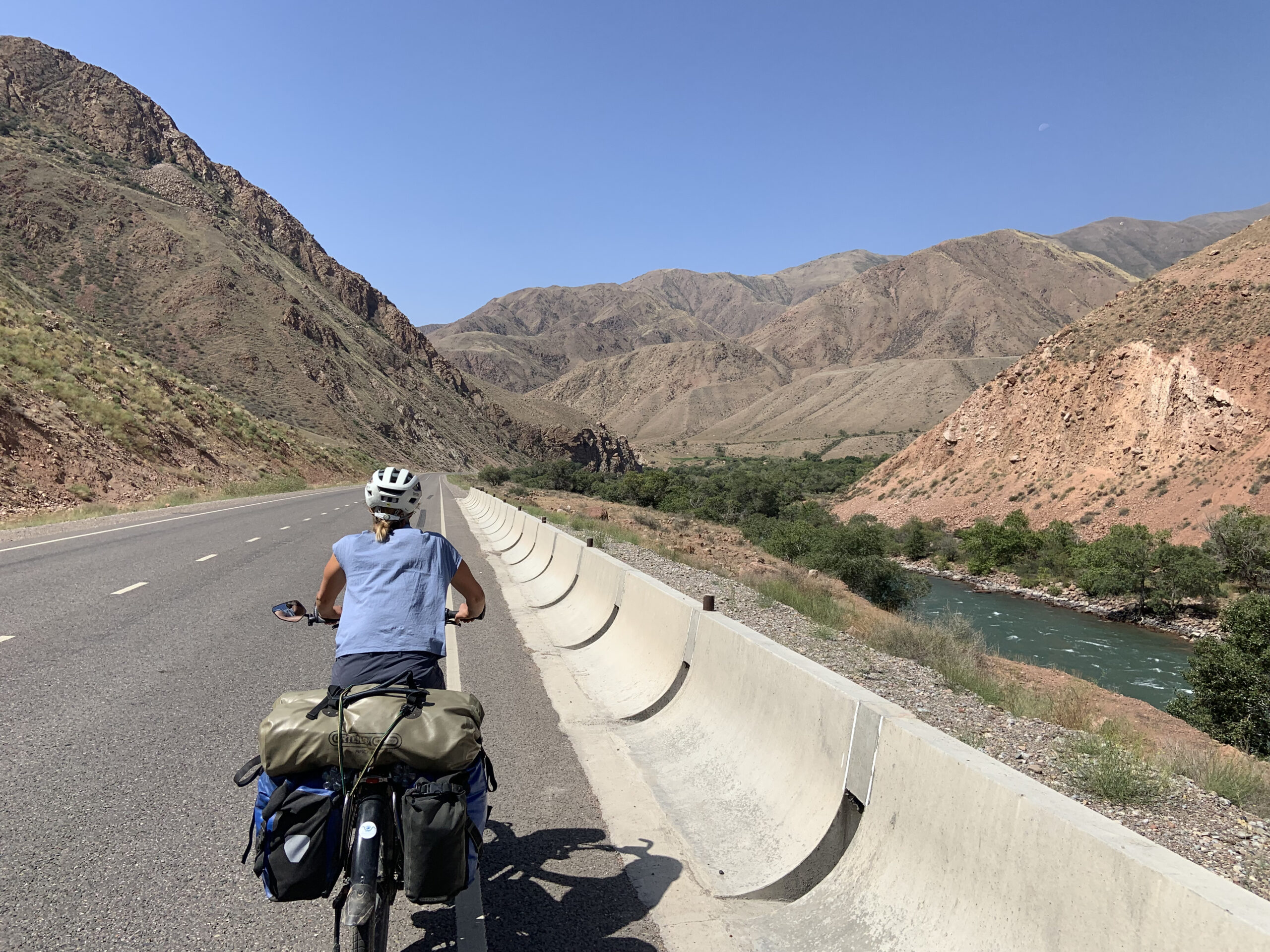
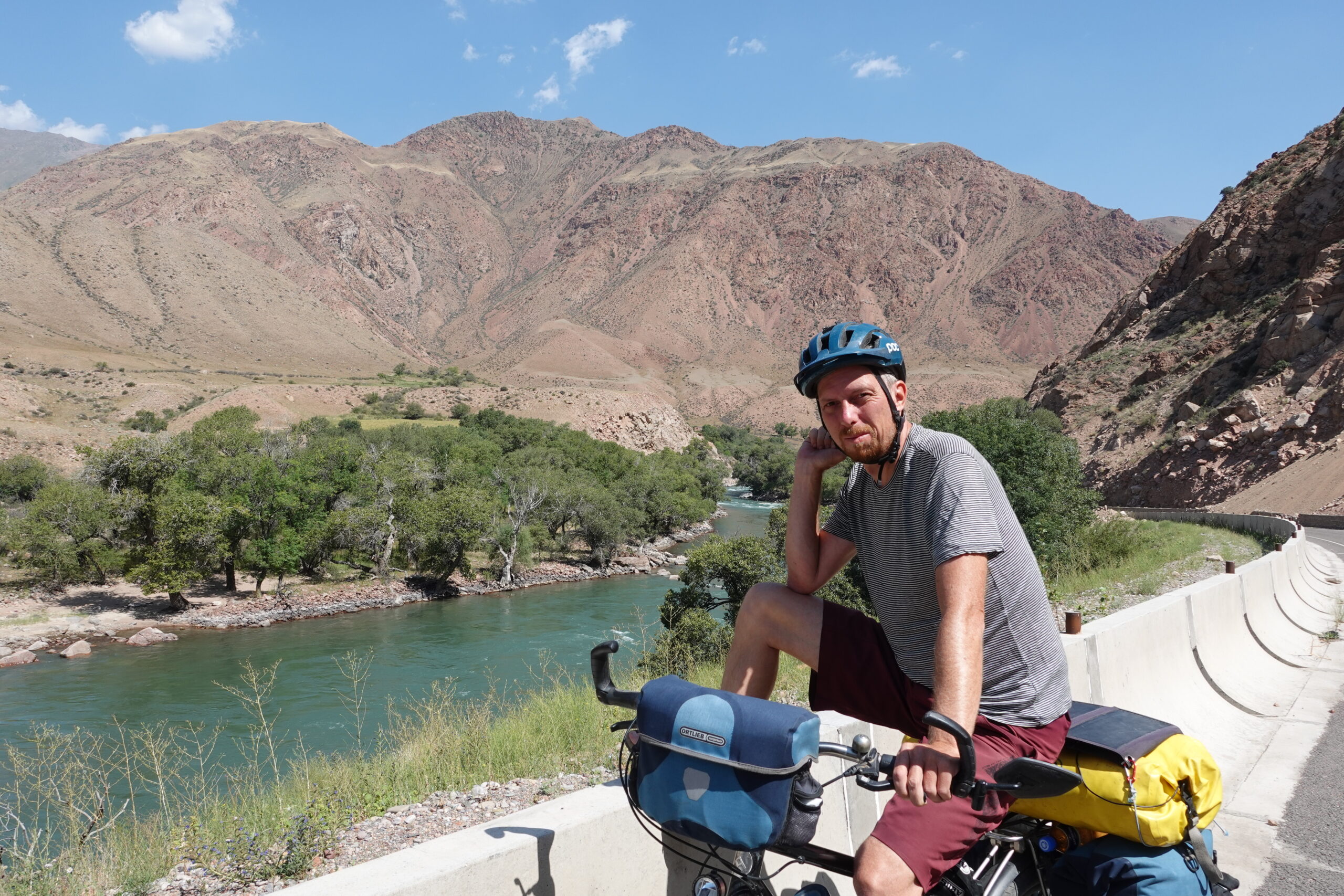
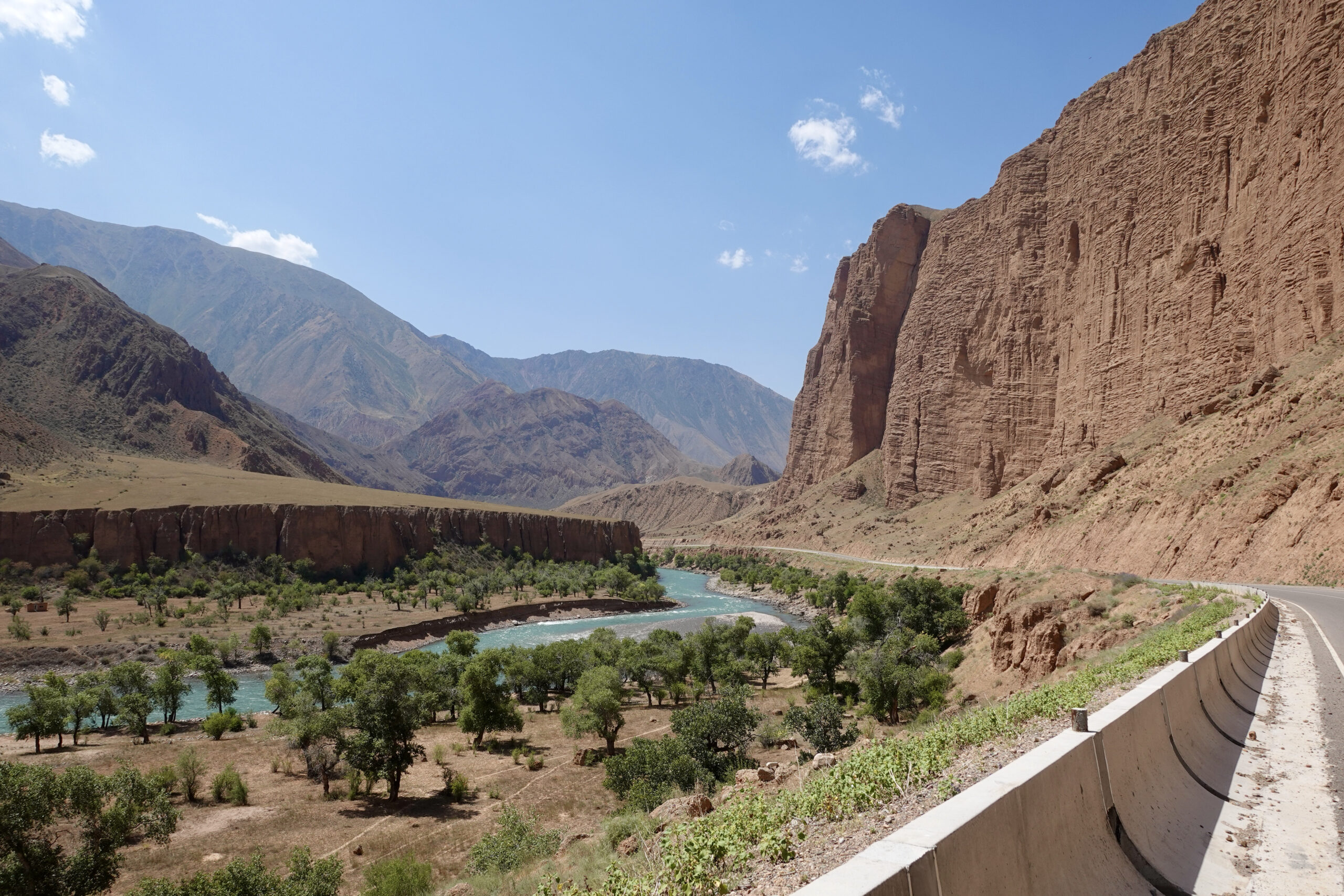
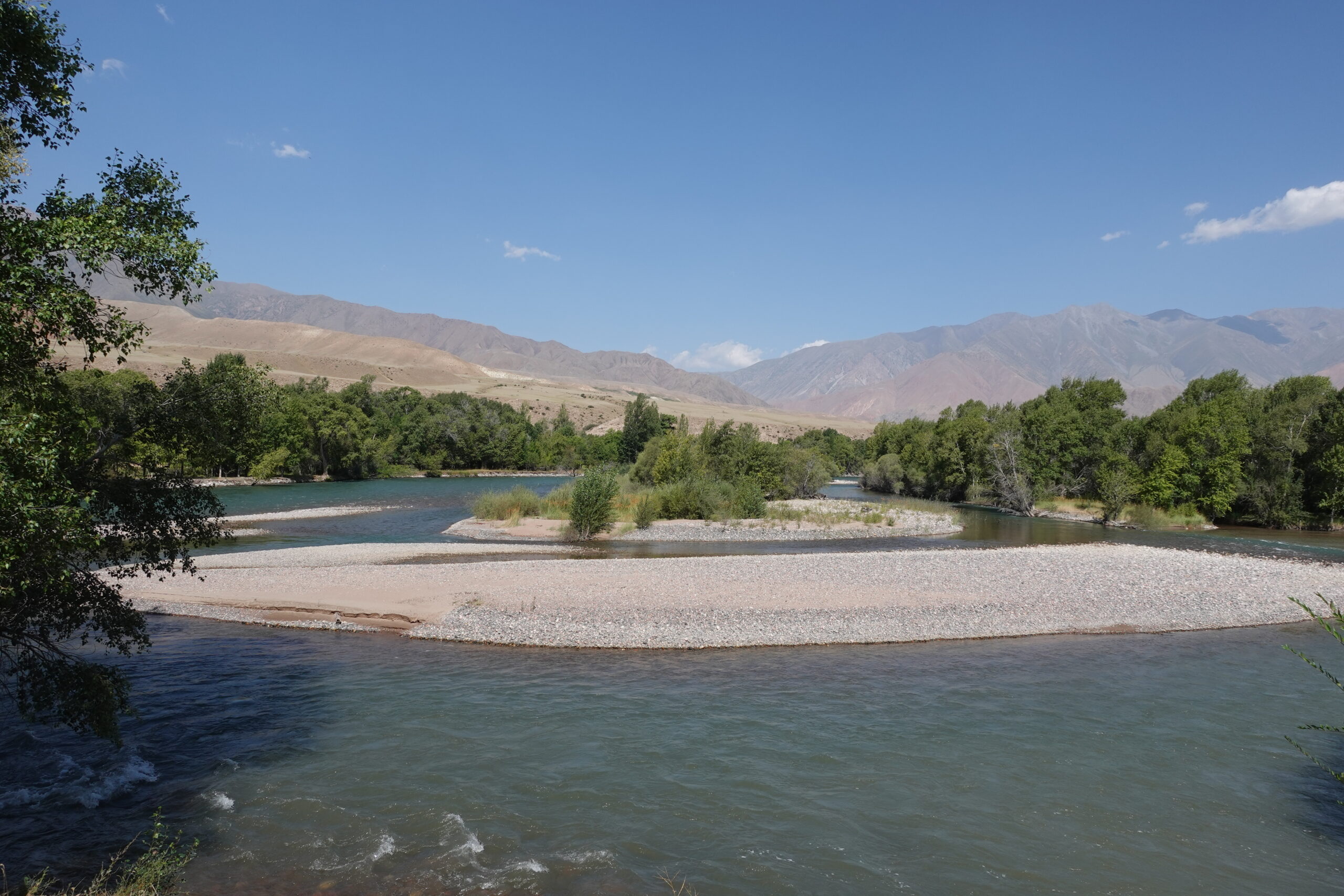
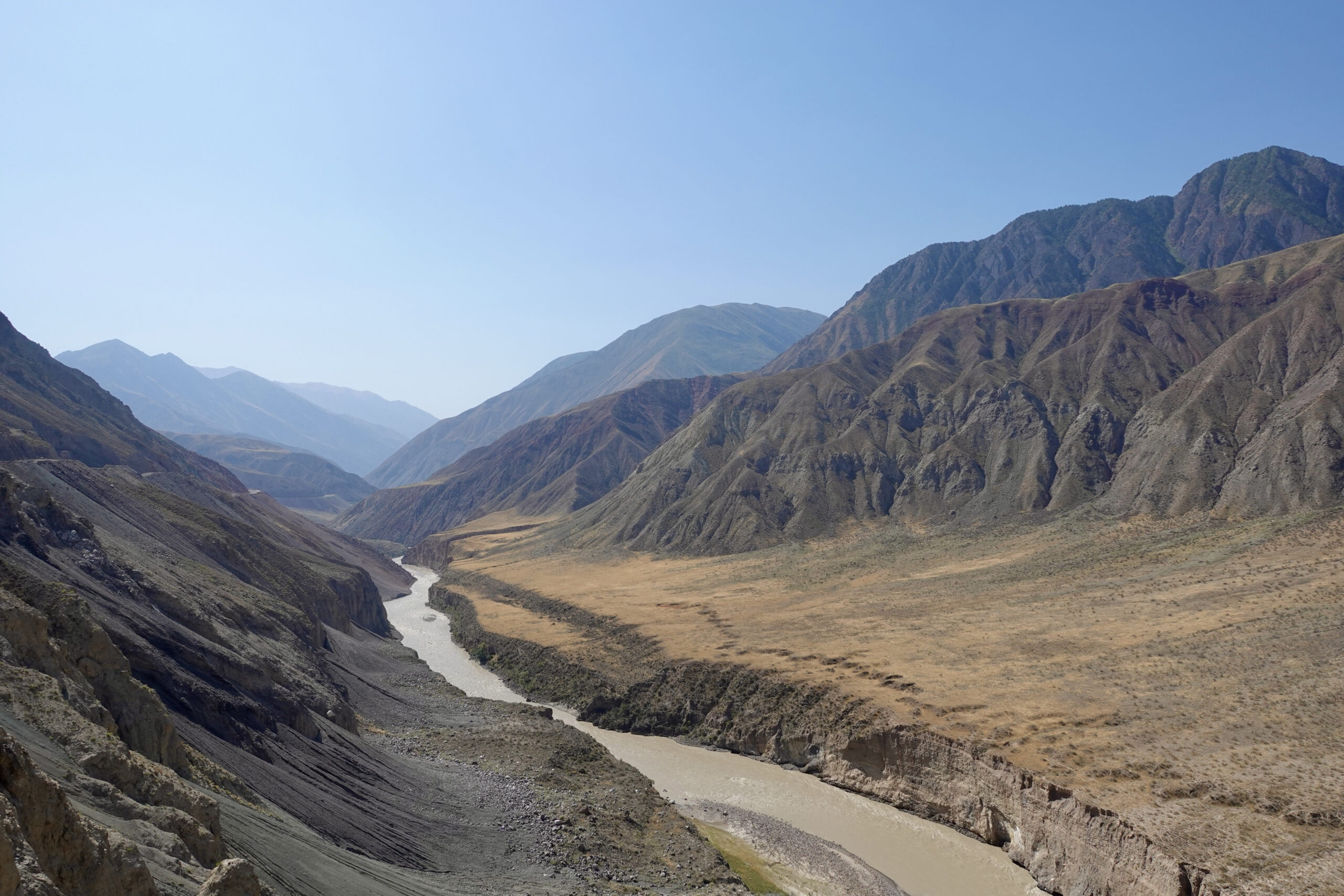

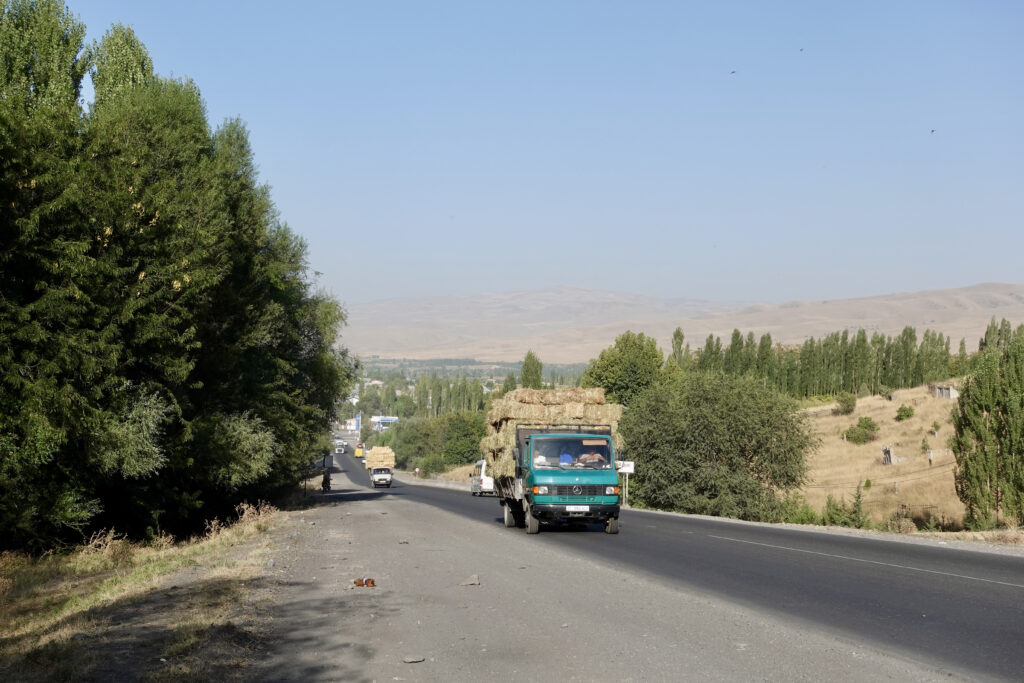
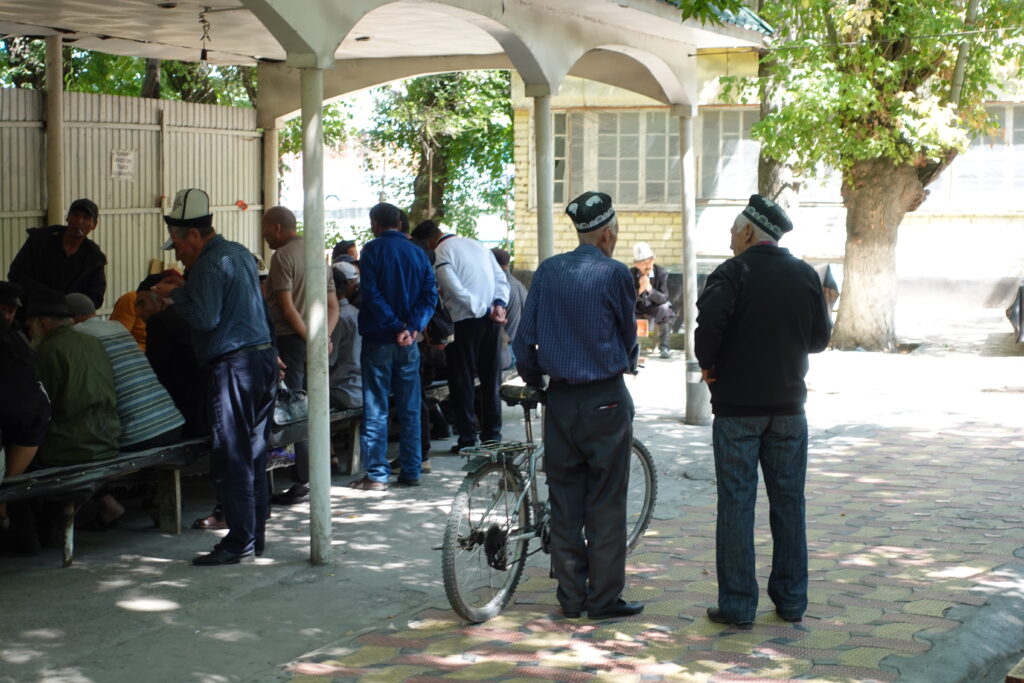
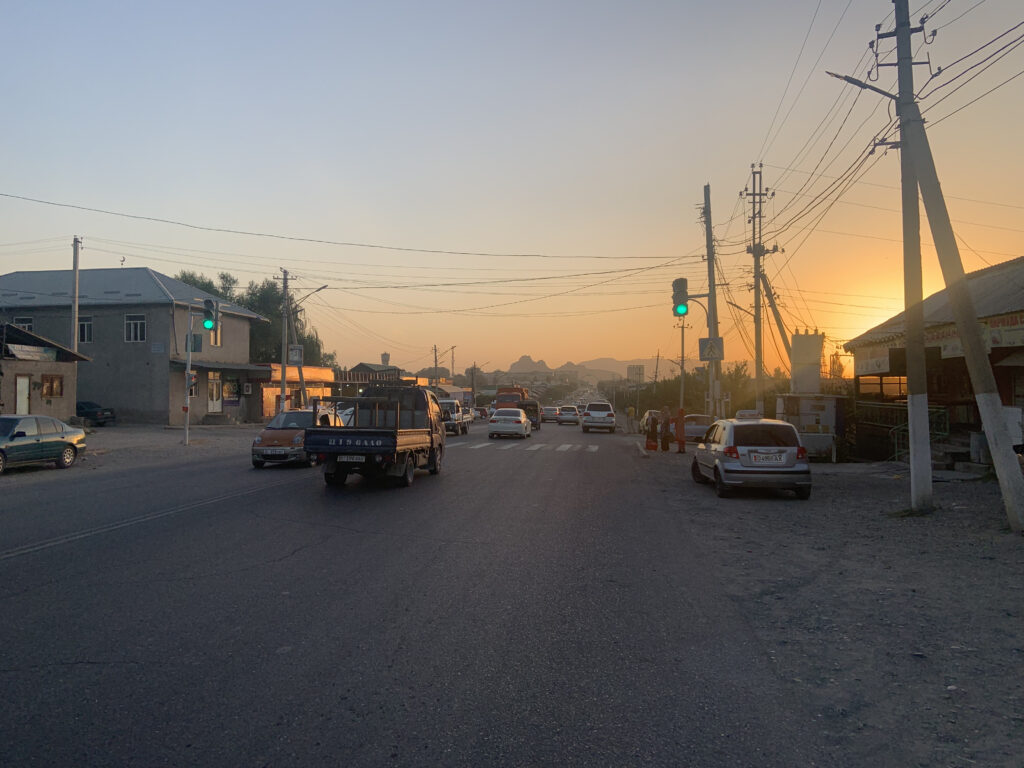

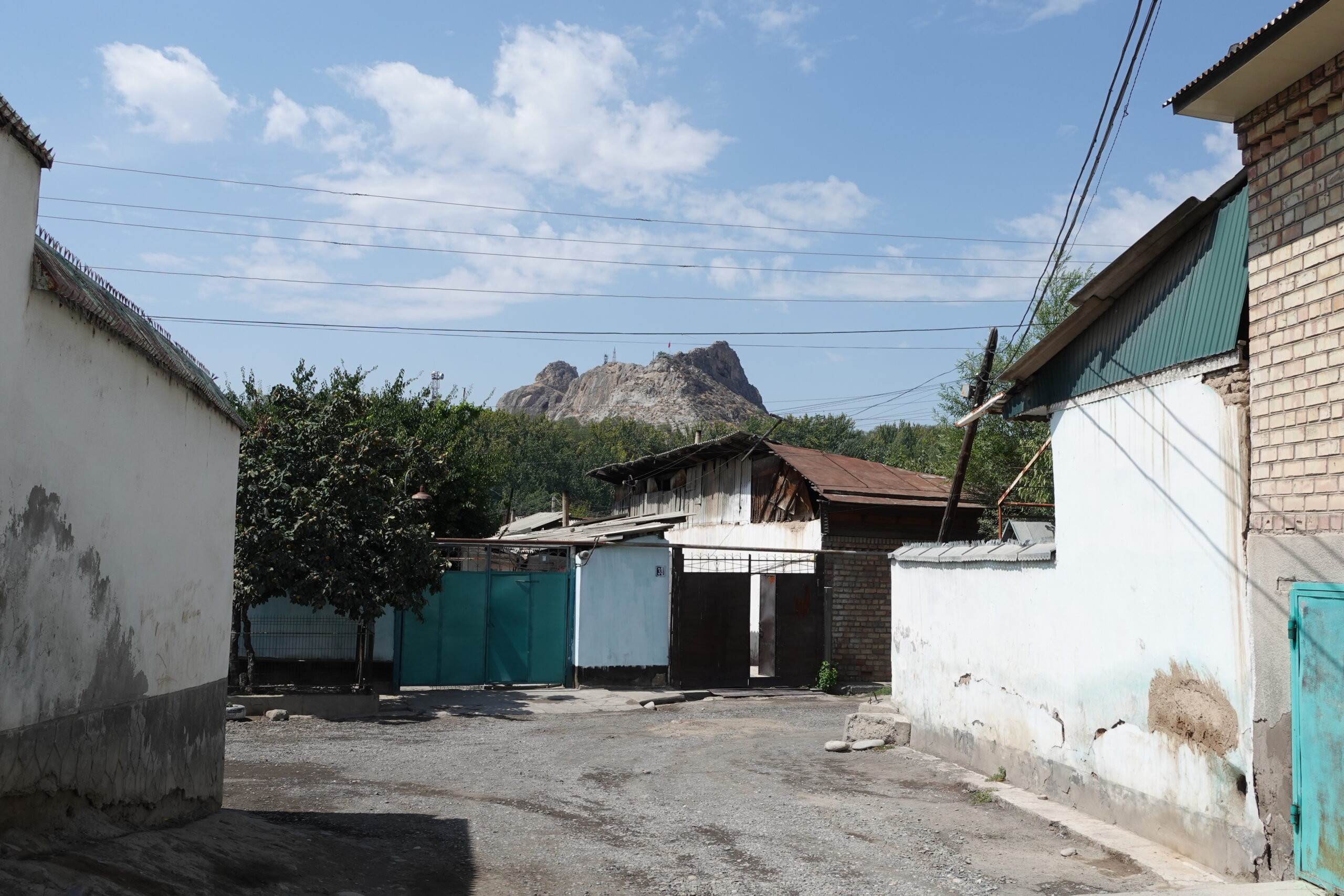
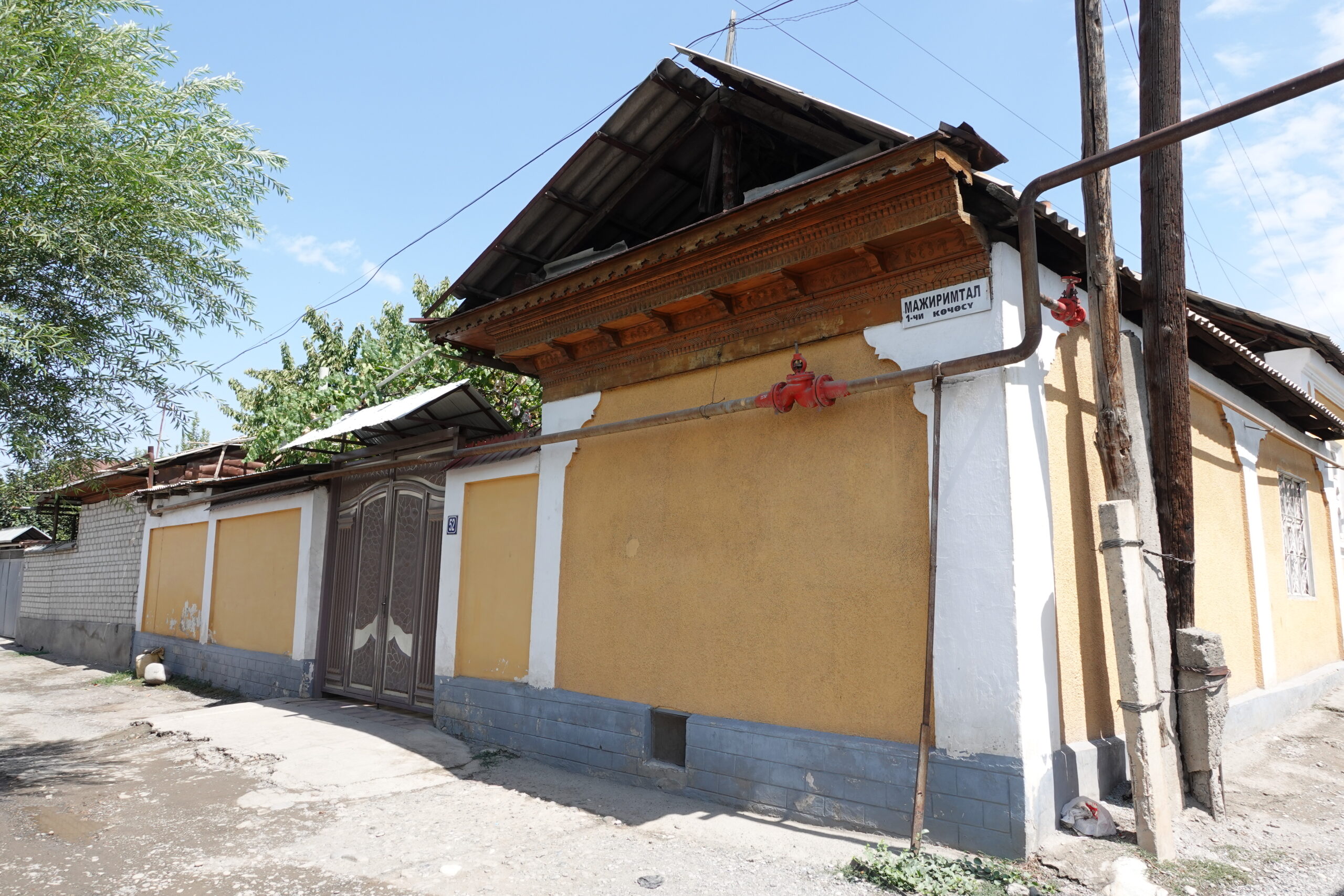
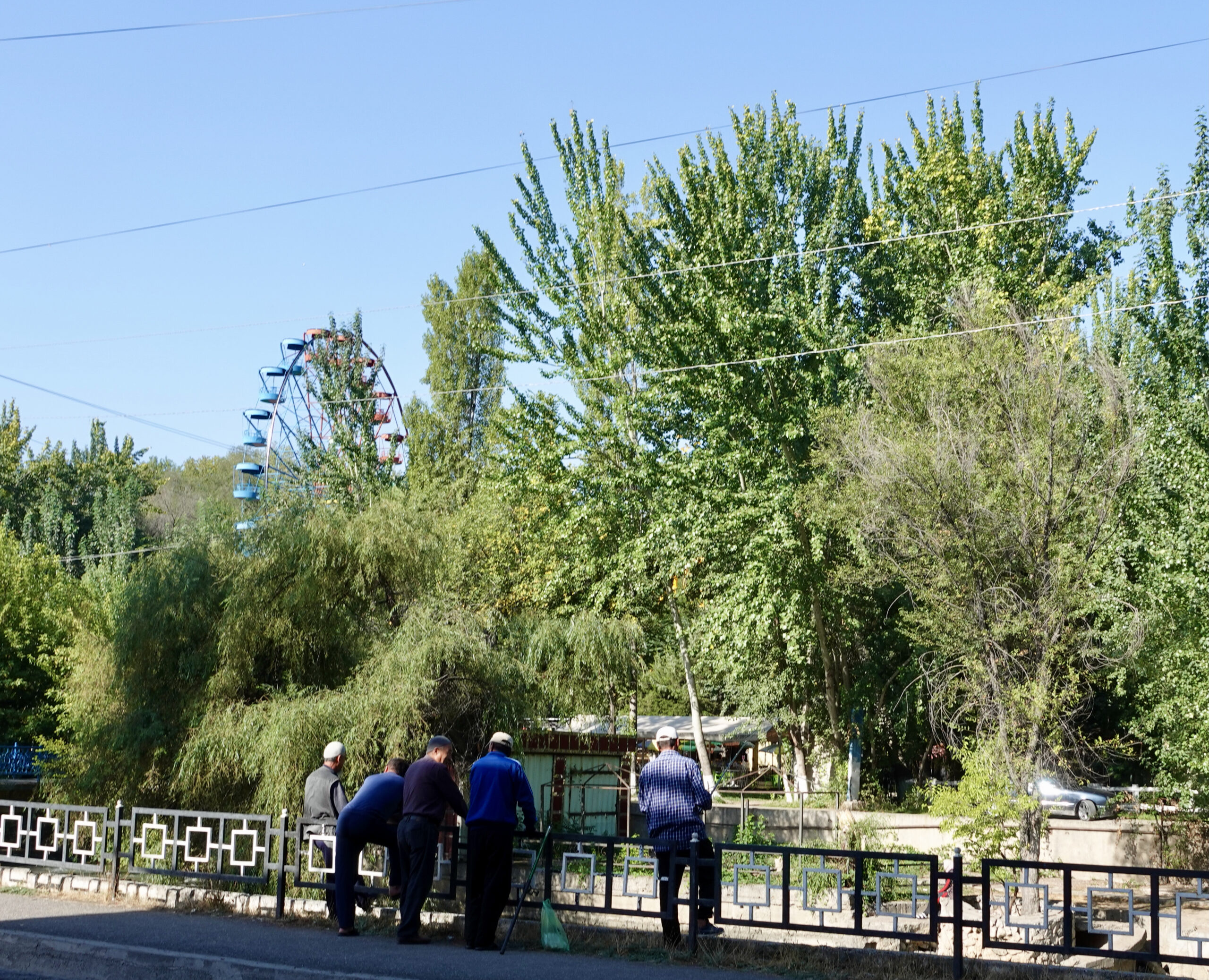
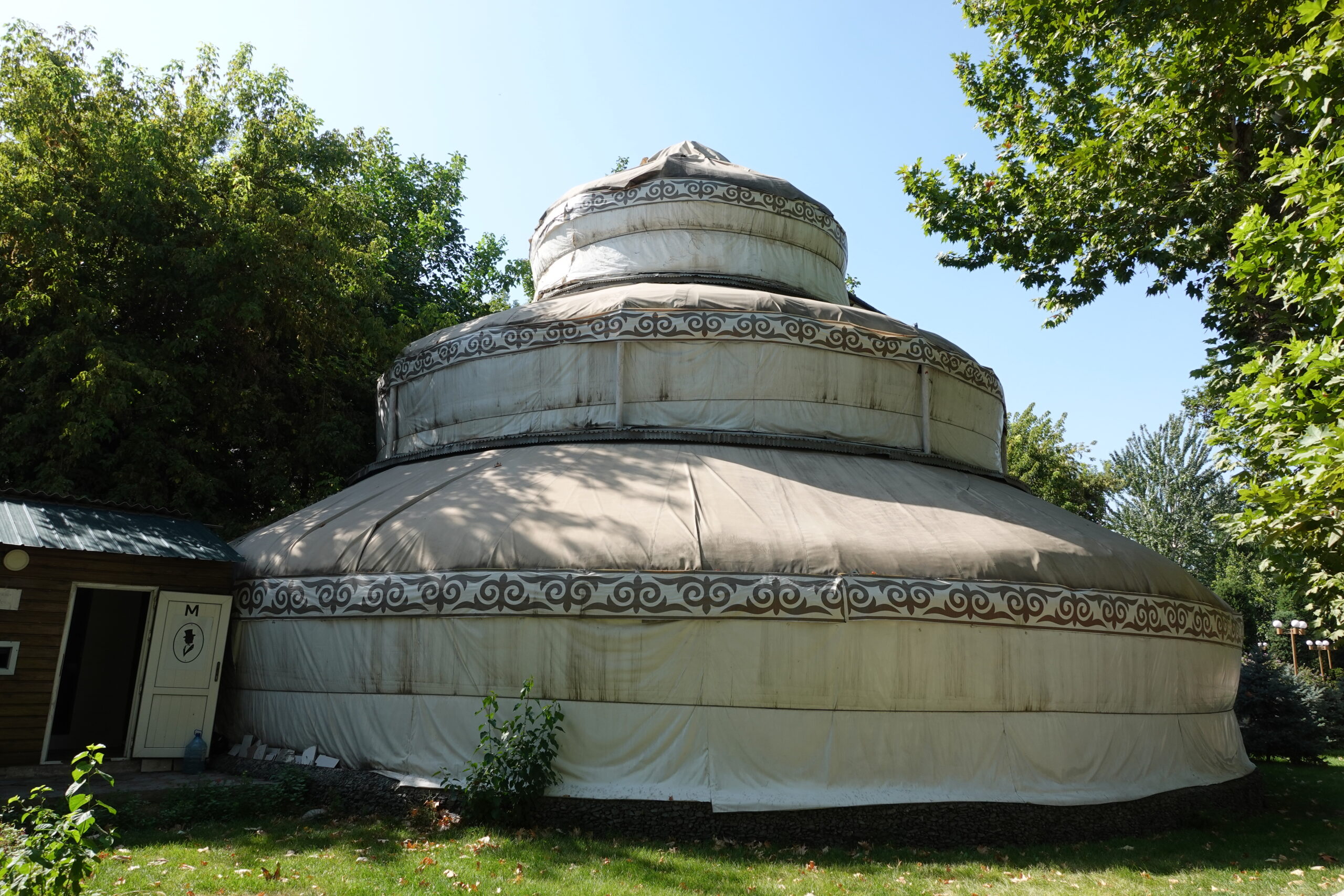
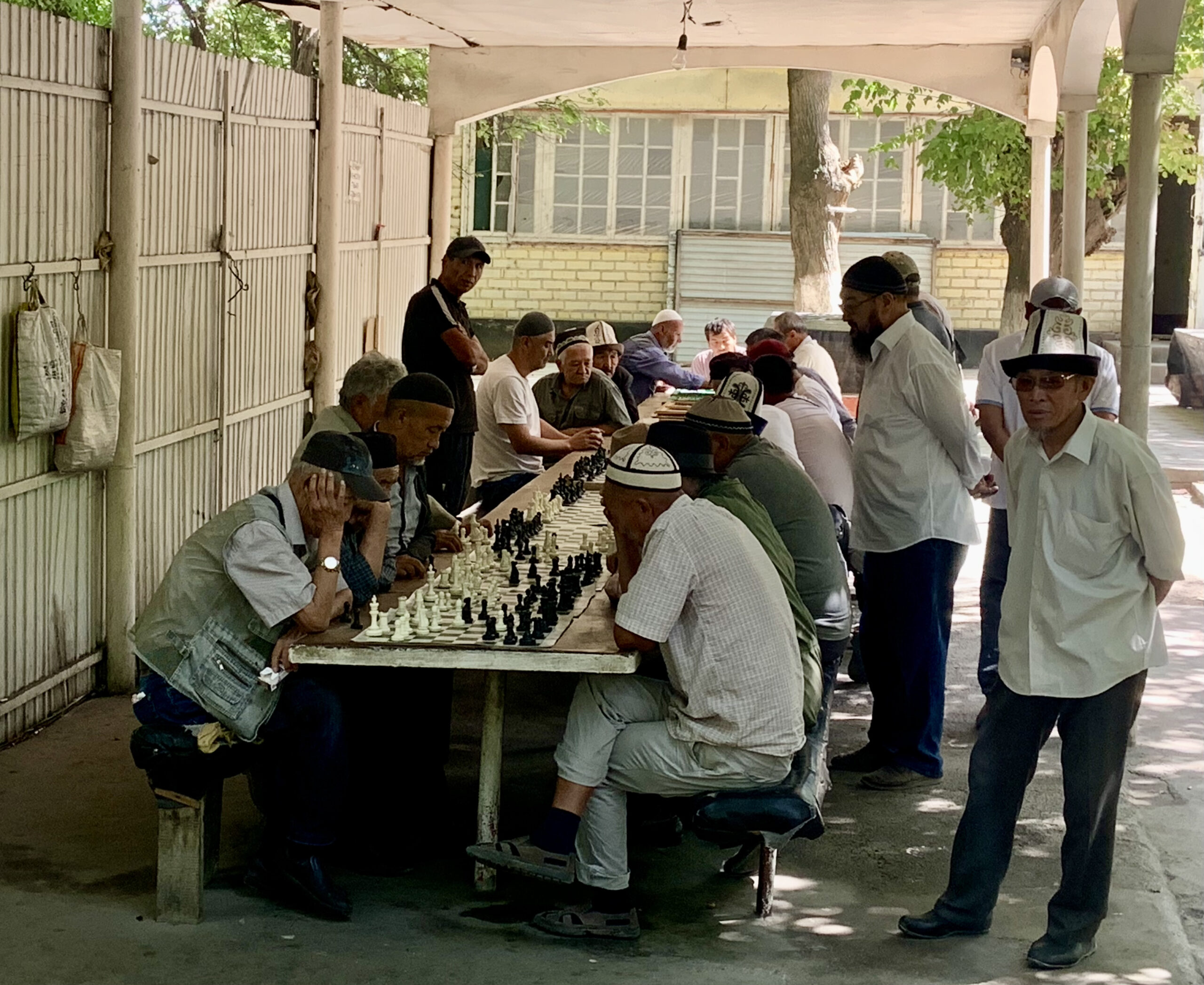
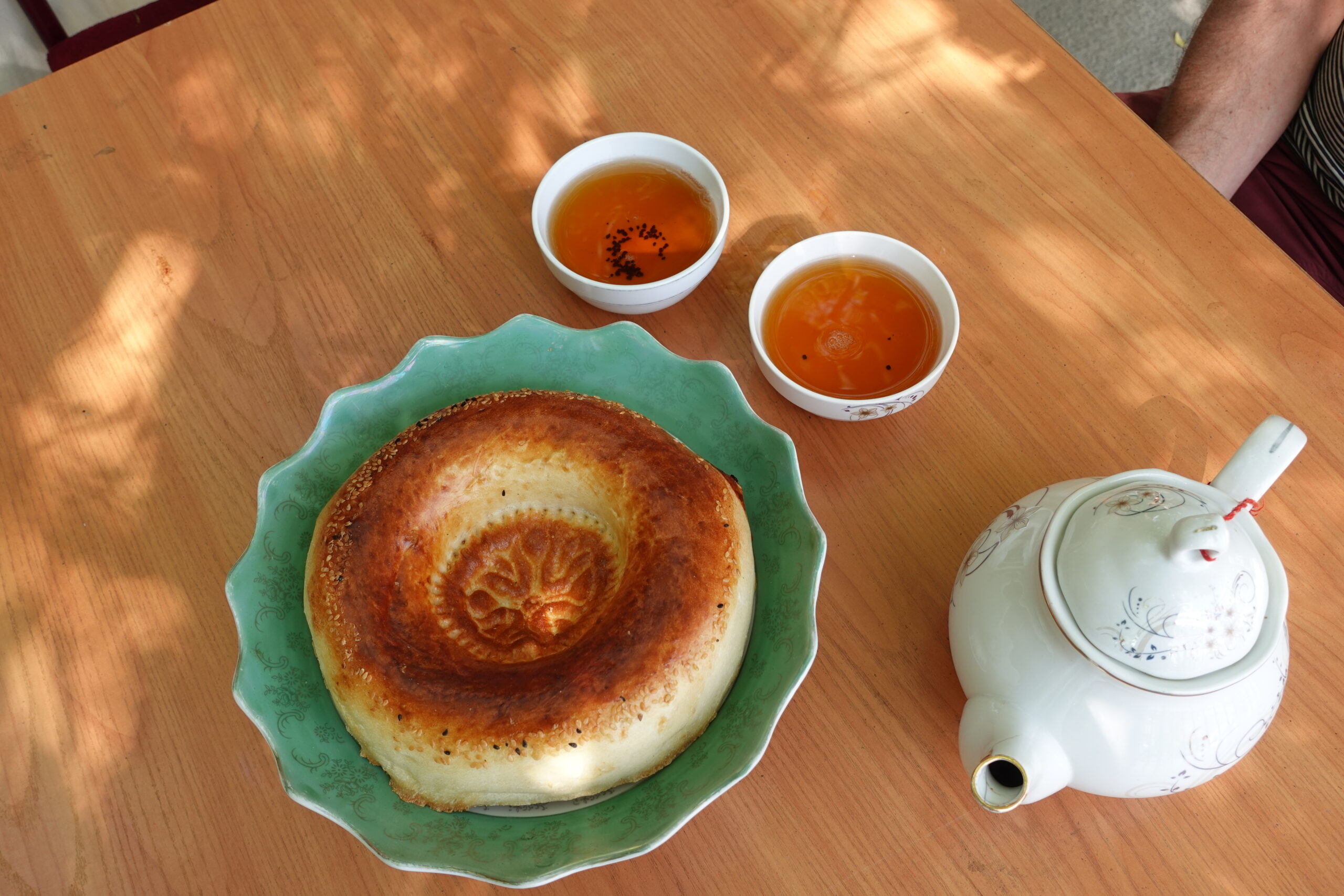

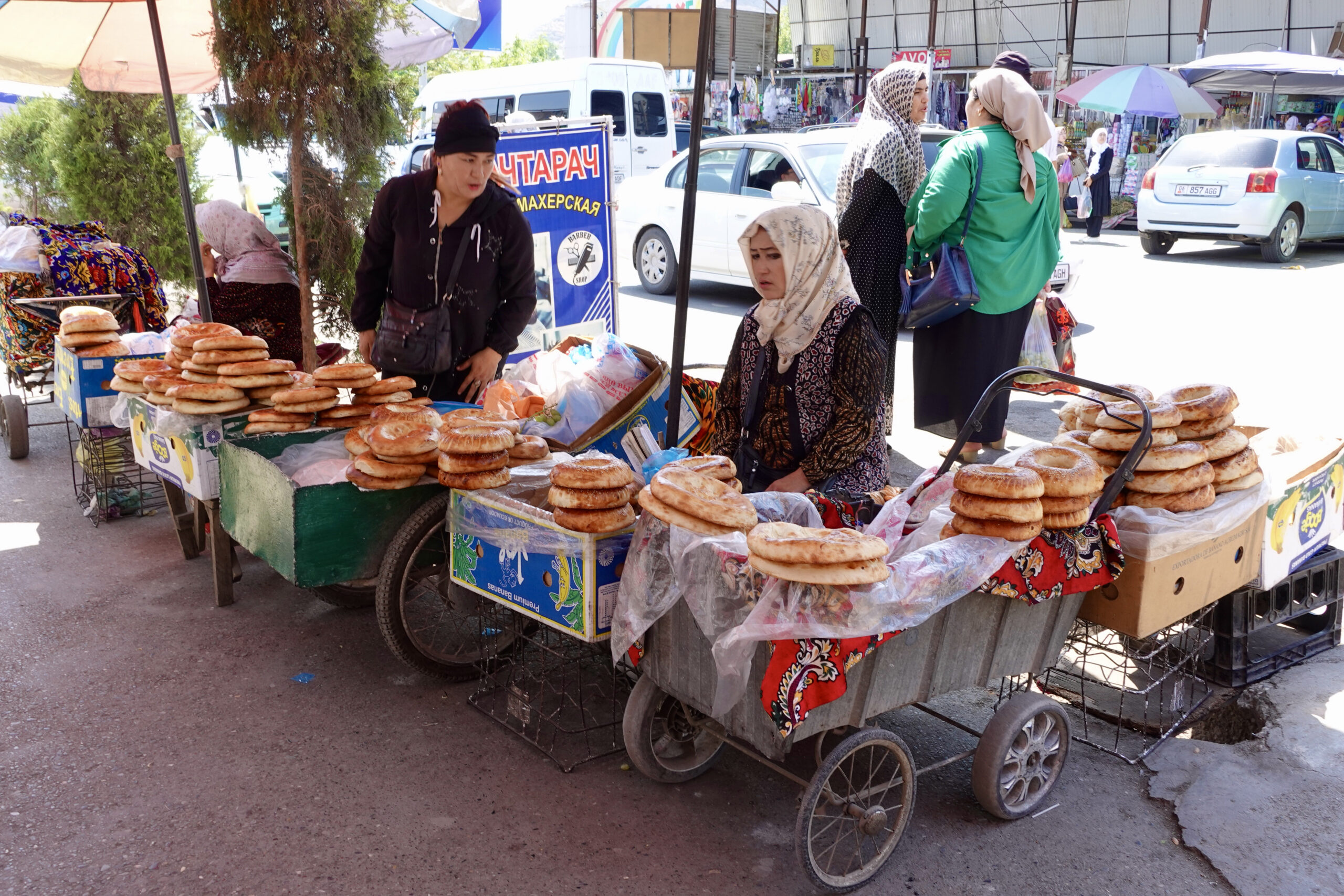
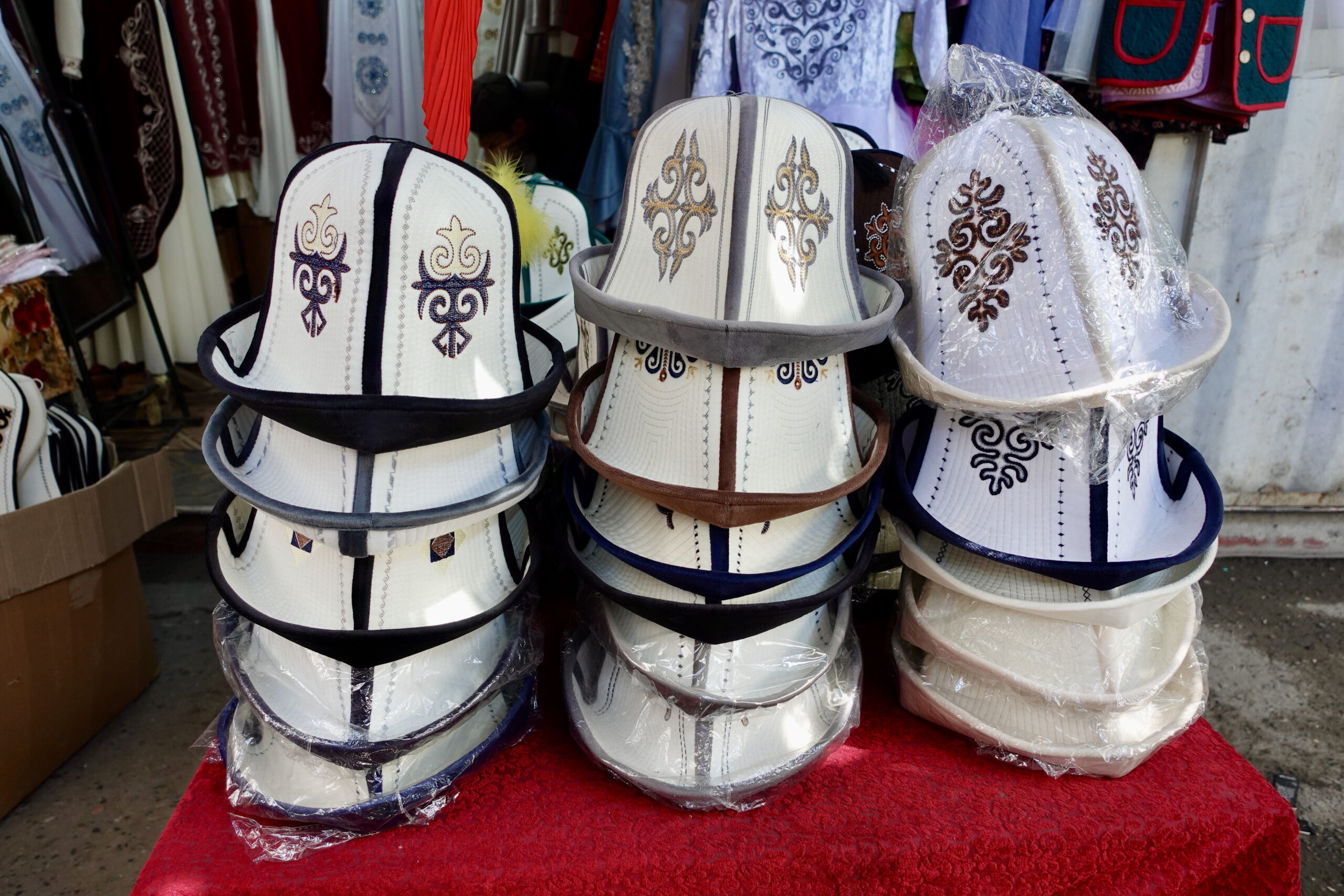
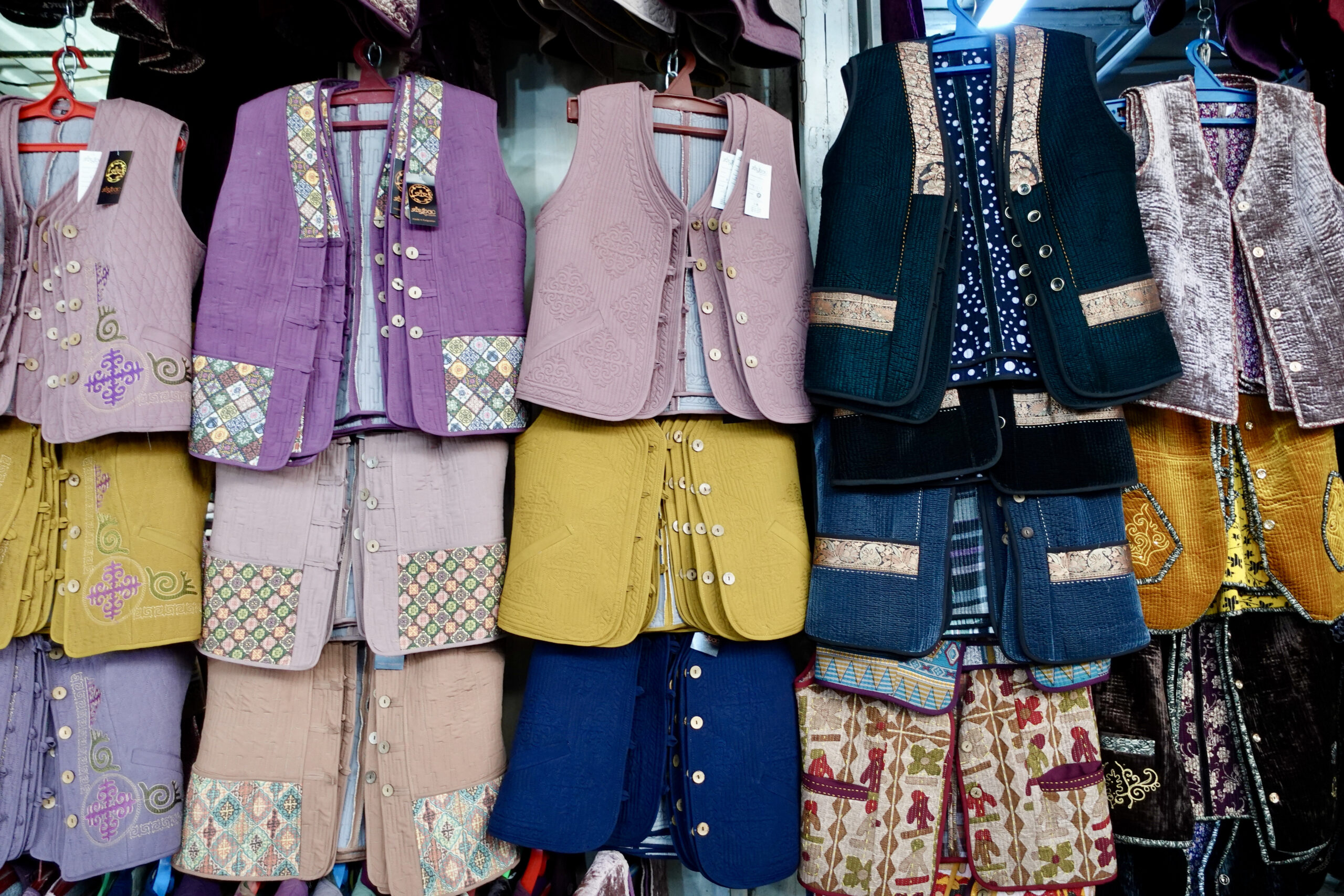
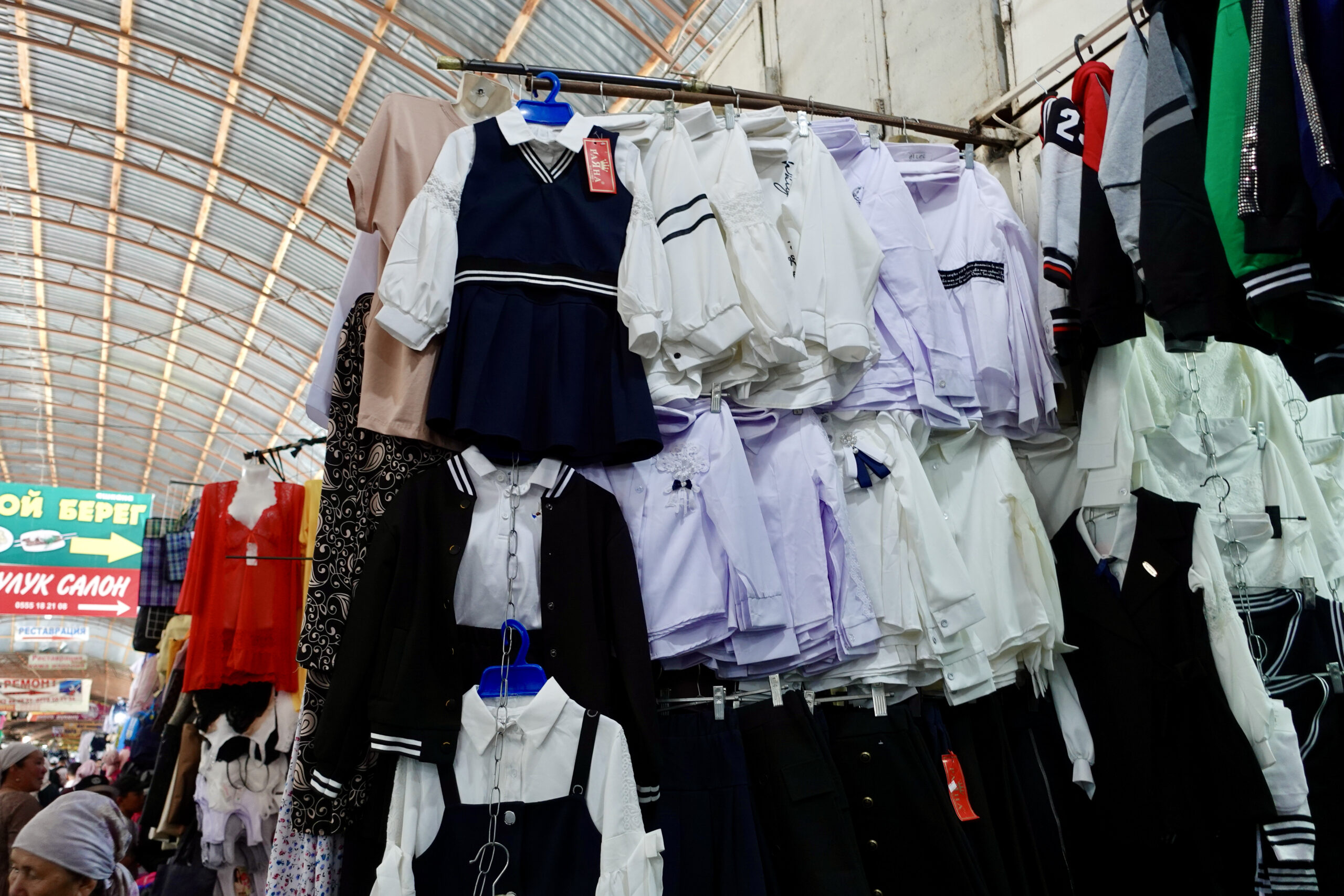
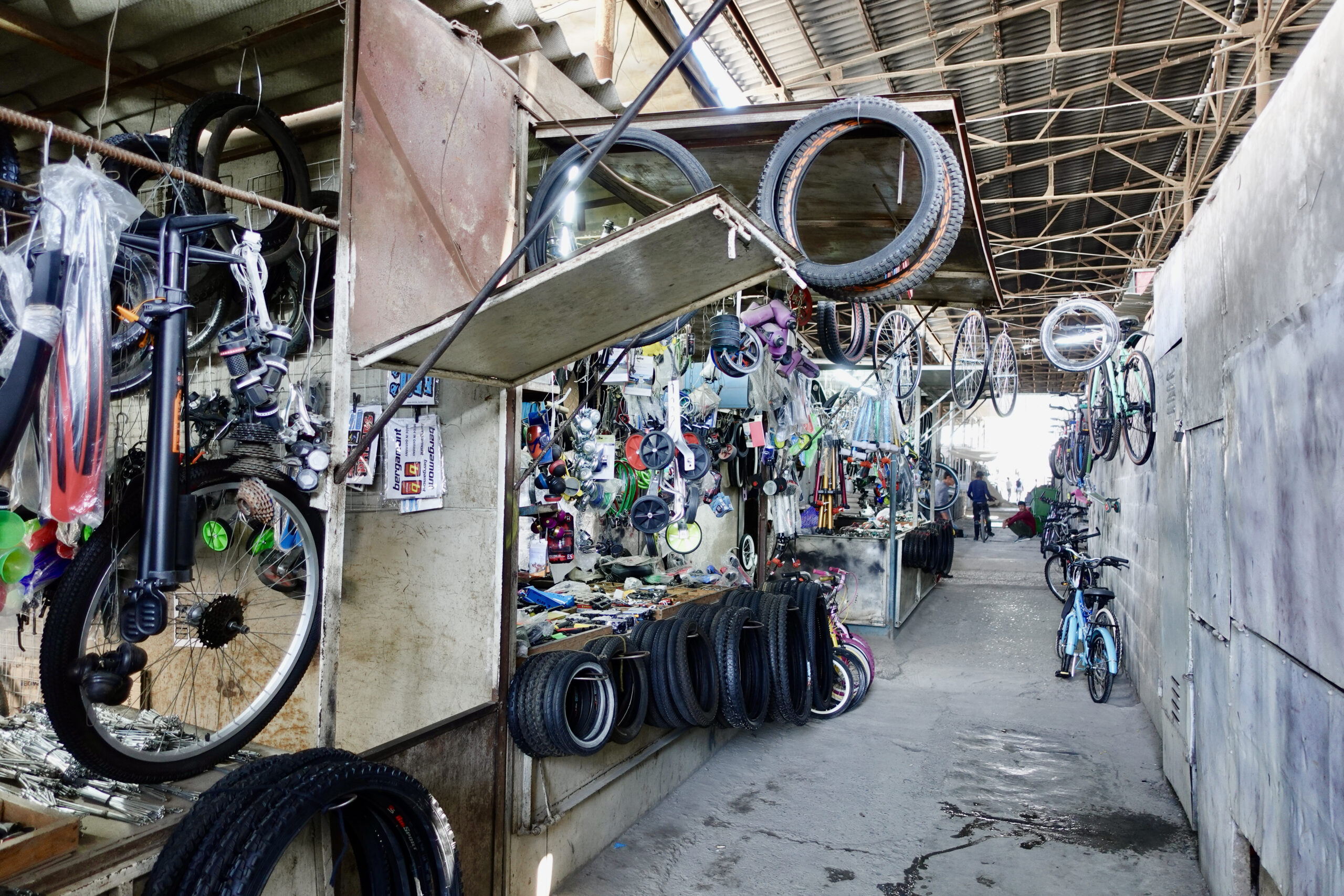
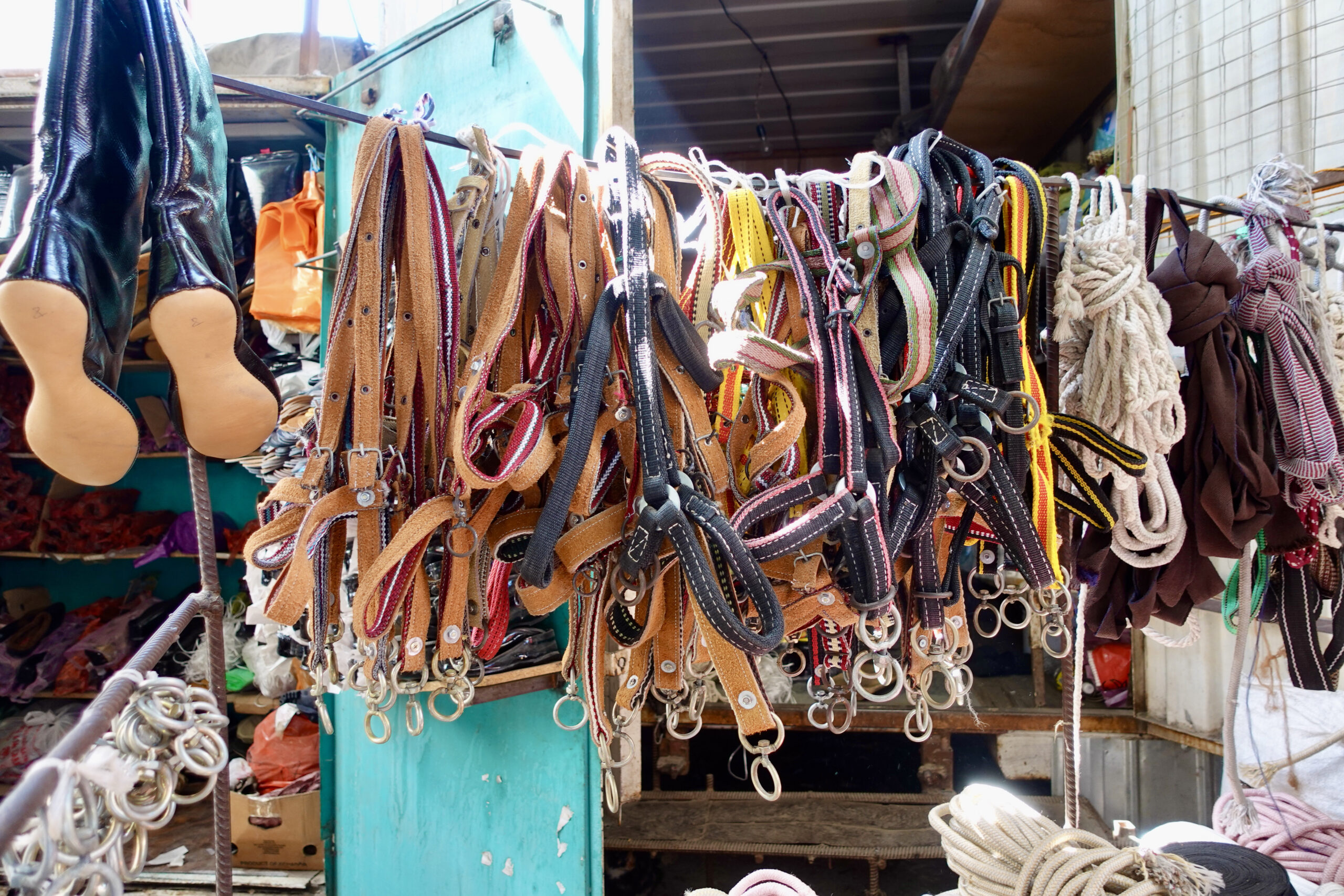
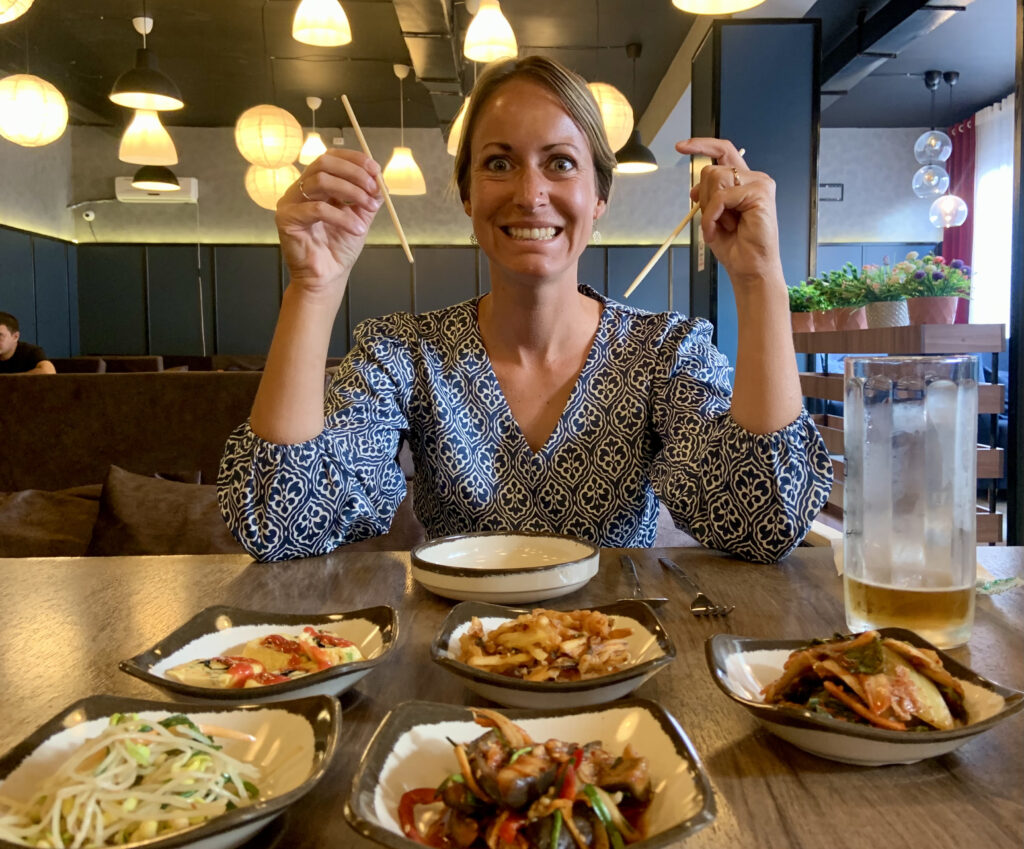


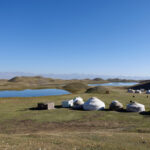
Leave a Reply